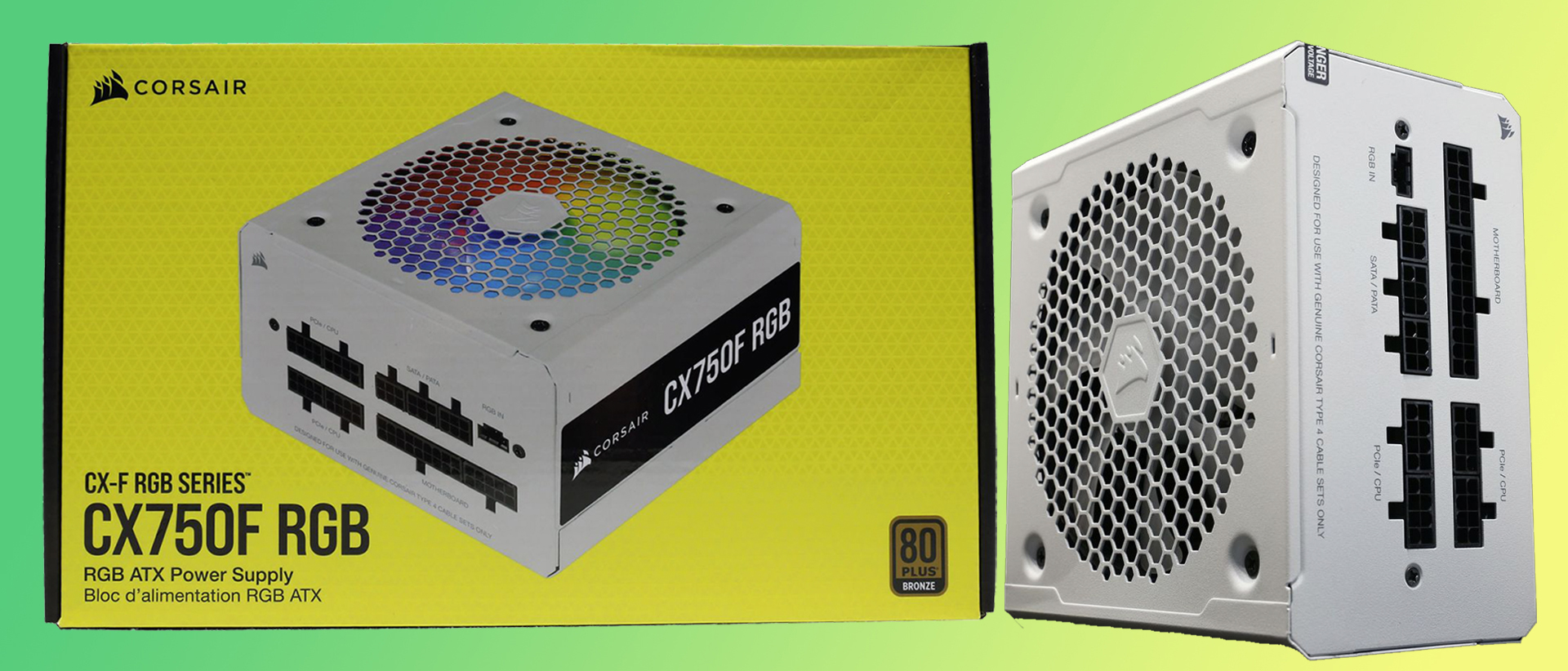Tom's Hardware Verdict
The CX750F is among the few Corsair PSU offerings with fully customized RGB lighting. It also offers decent performance, but its price puts it into a highly competitive zone.
Pros
- +
+ Full power at 47 degrees Celsius
- +
+ Efficient platform
- +
+ Good build quality
- +
+ Good transient response at 12V
- +
+ Alternative Low Power Mode support
- +
+ Fully modular
- +
+ Plenty of connectors
- +
+ Compact dimensions
- +
+ Black and white versions are available
- +
+ ARGB lighting
- +
+ ARGB adapter provided
- +
+ 5-year warranty
Cons
- -
Quite expensive for its efficiency category
- -
Not so competitive overall performance
- -
Gets noisy in tough conditions
- -
Lower than 17ms hold-up time
- -
Ripple could be lower at 12V and 3.3V
- -
High inrush current with 230V
- -
Short distance between peripheral connectors
Why you can trust Tom's Hardware
The CX750F is among the few Corsair PSUs with RGB lighting, and it is also offered in two flavors, white and black, to match your system's needs. Performance-wise it doesn't set any records, with the more expensive Corsair CX750M, which is a fresh release, being notably ahead. The XPG Pylon 750 also offers superior performance, but also lacks RGB lighting. If you want a fancy-looking PSU with cool RGB lighting effects, which can be controlled manually or through software (iCUE or through your mainboard's software), the CX750F is a good choice. Still, there are better performing PSUs in this category so it cannot be included in our best PSUs article.
The Corsair CX-F RGB line consists of three members with 550W, 650W, and 750W maximum power. In this review, we will evaluate the stronger member of the line, which has enough power for a mid-level gaming system. Obviously, the major selling point of these units is the RGB lighting, which is a rare feature in Corsair's PSU portfolio. Besides manual RGB control, you can also set lighting to your taste, through the iCUE application, which is not that easy to use but offers tons of options. You can also control the PSU's lighting through a compatible motherboard if you utilize the provided ARGB cable. Finally, the CXF units come in black and white flavors.
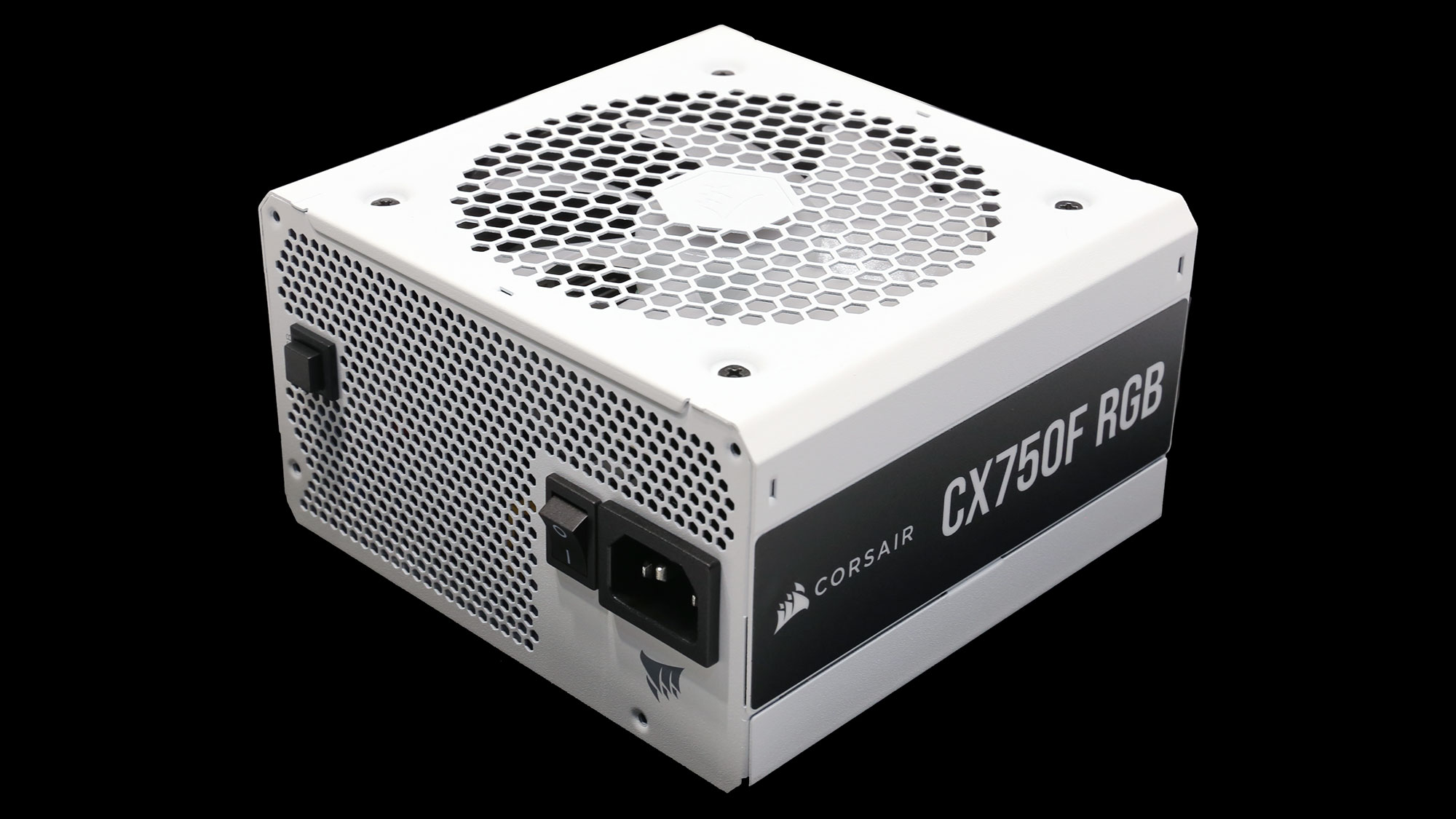
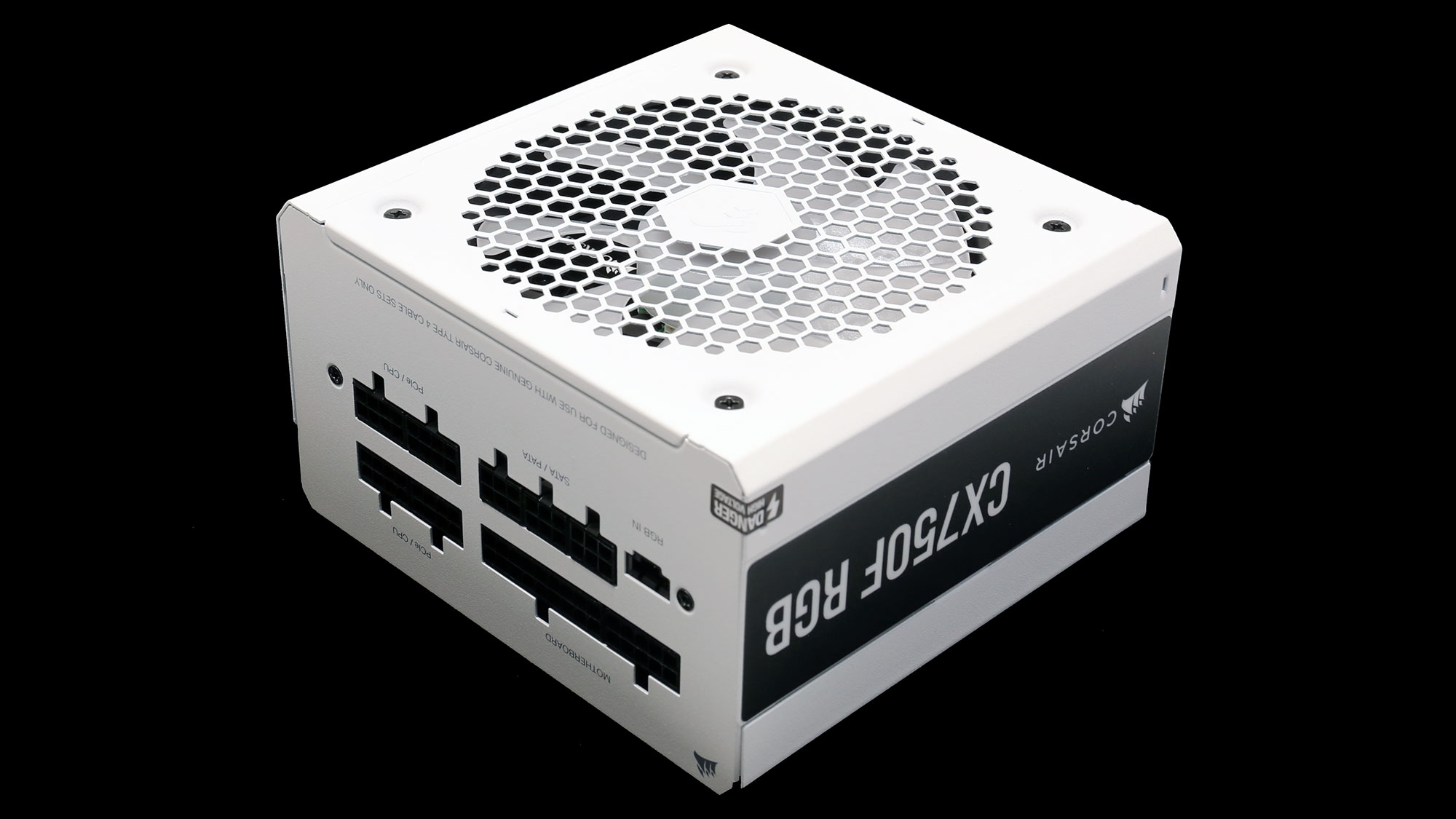
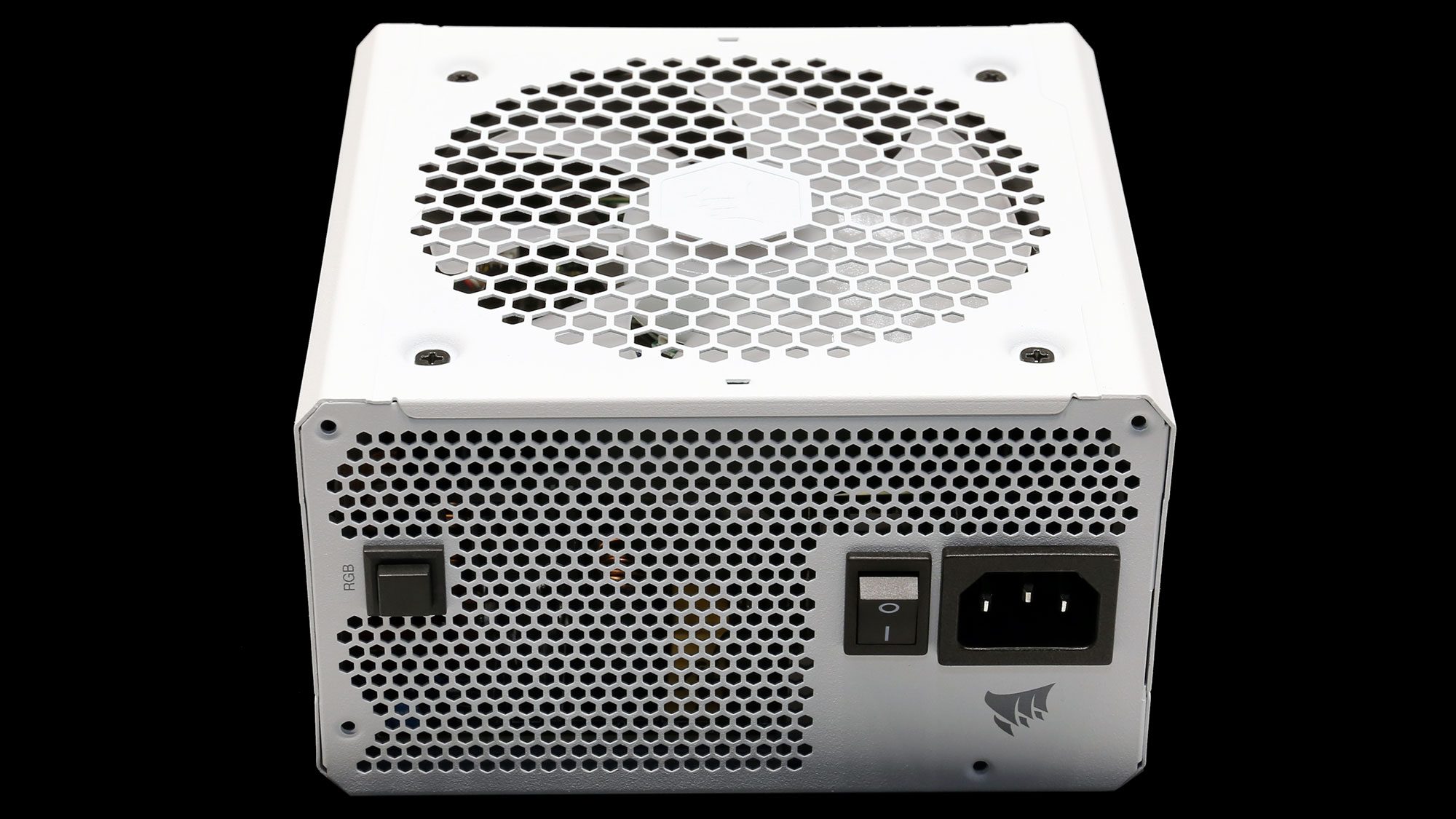
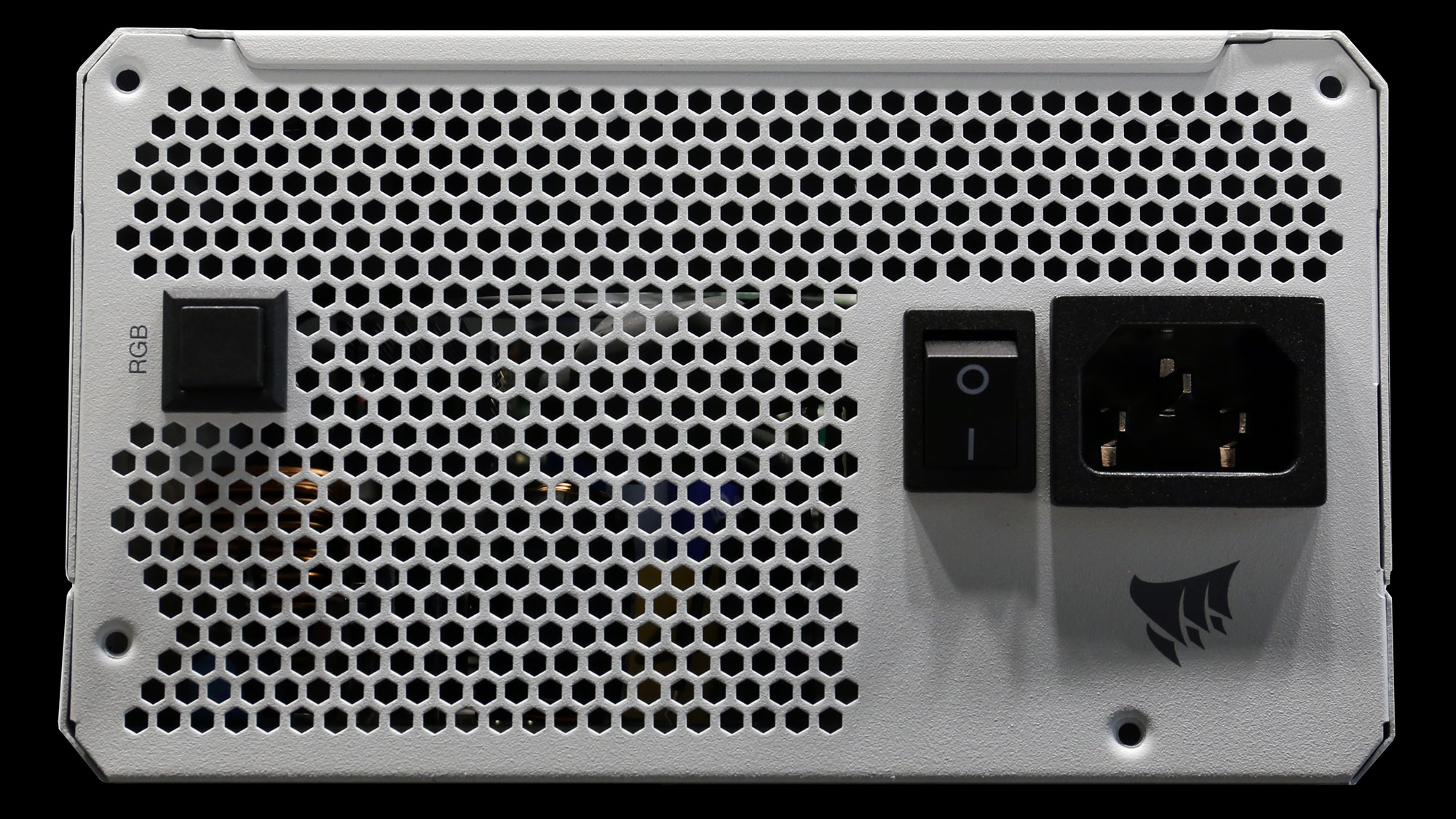
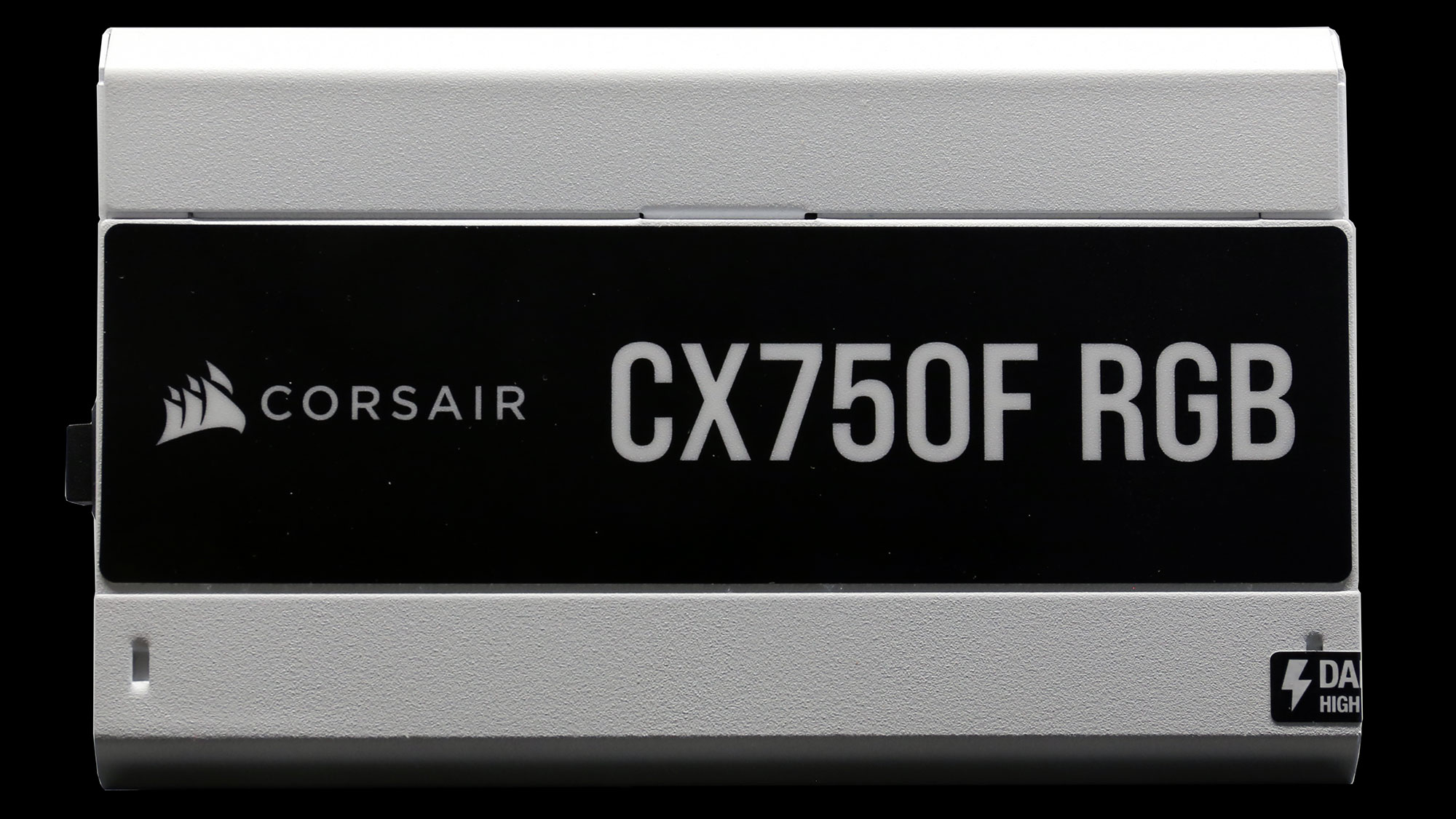

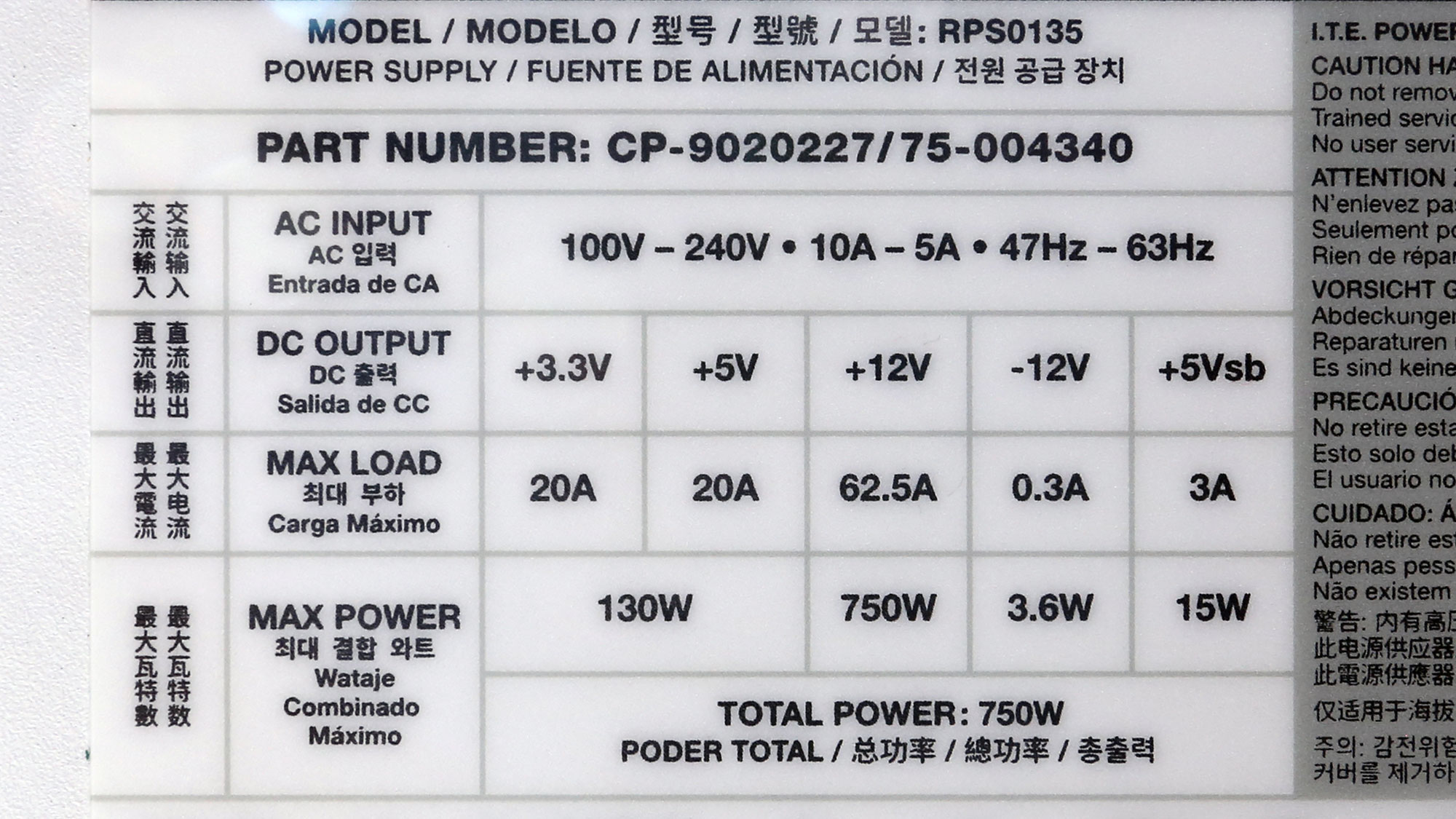
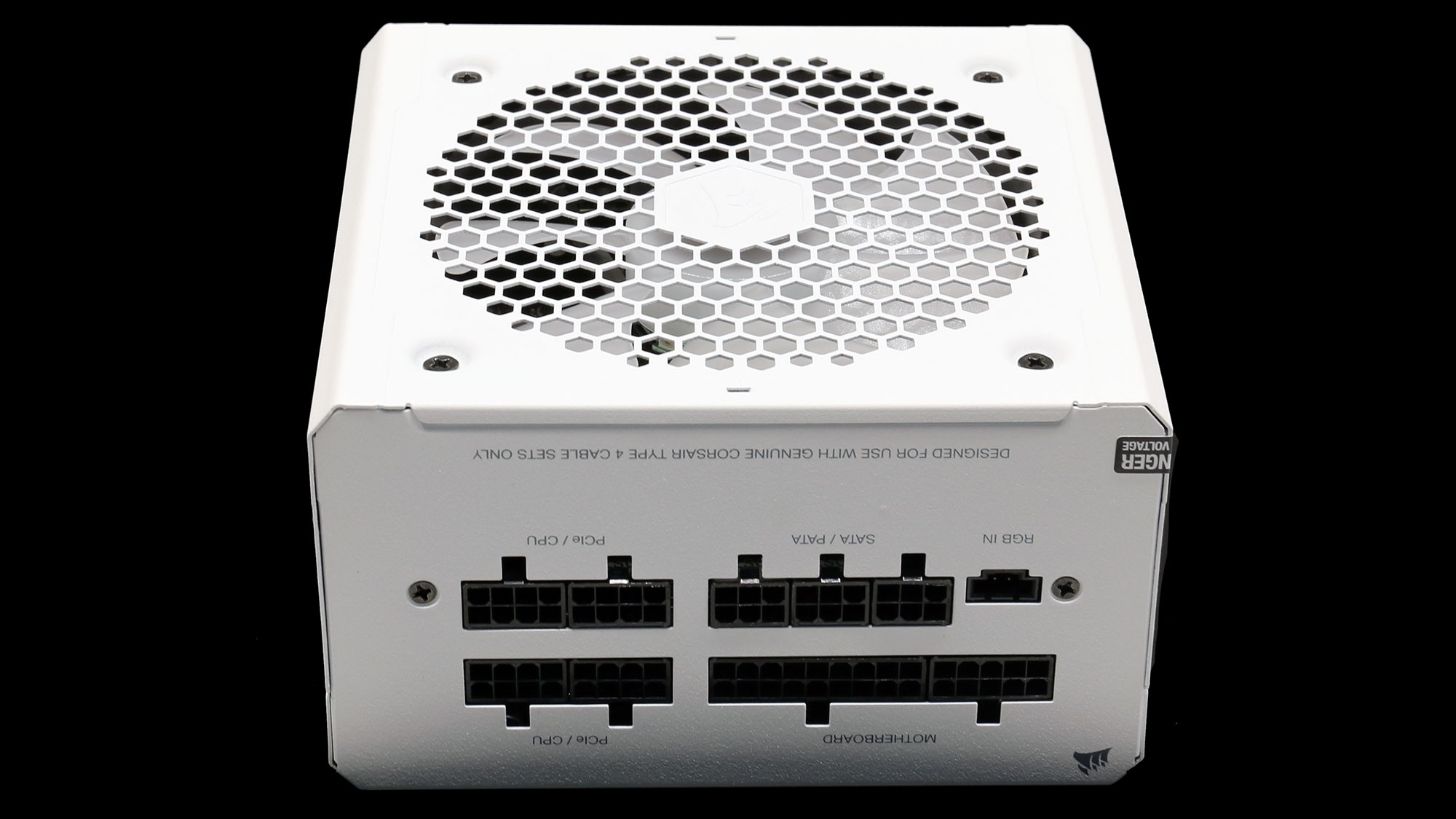
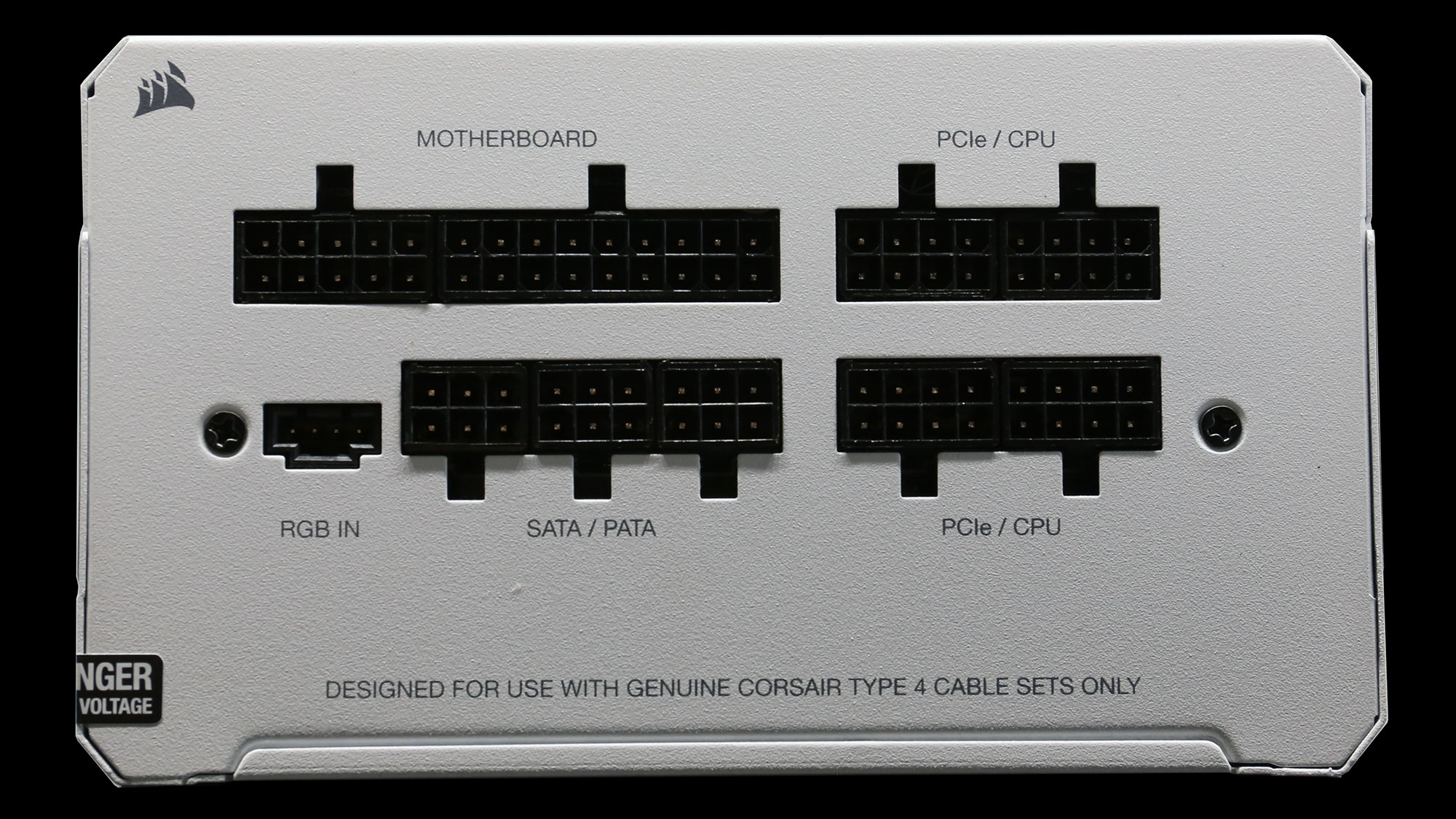

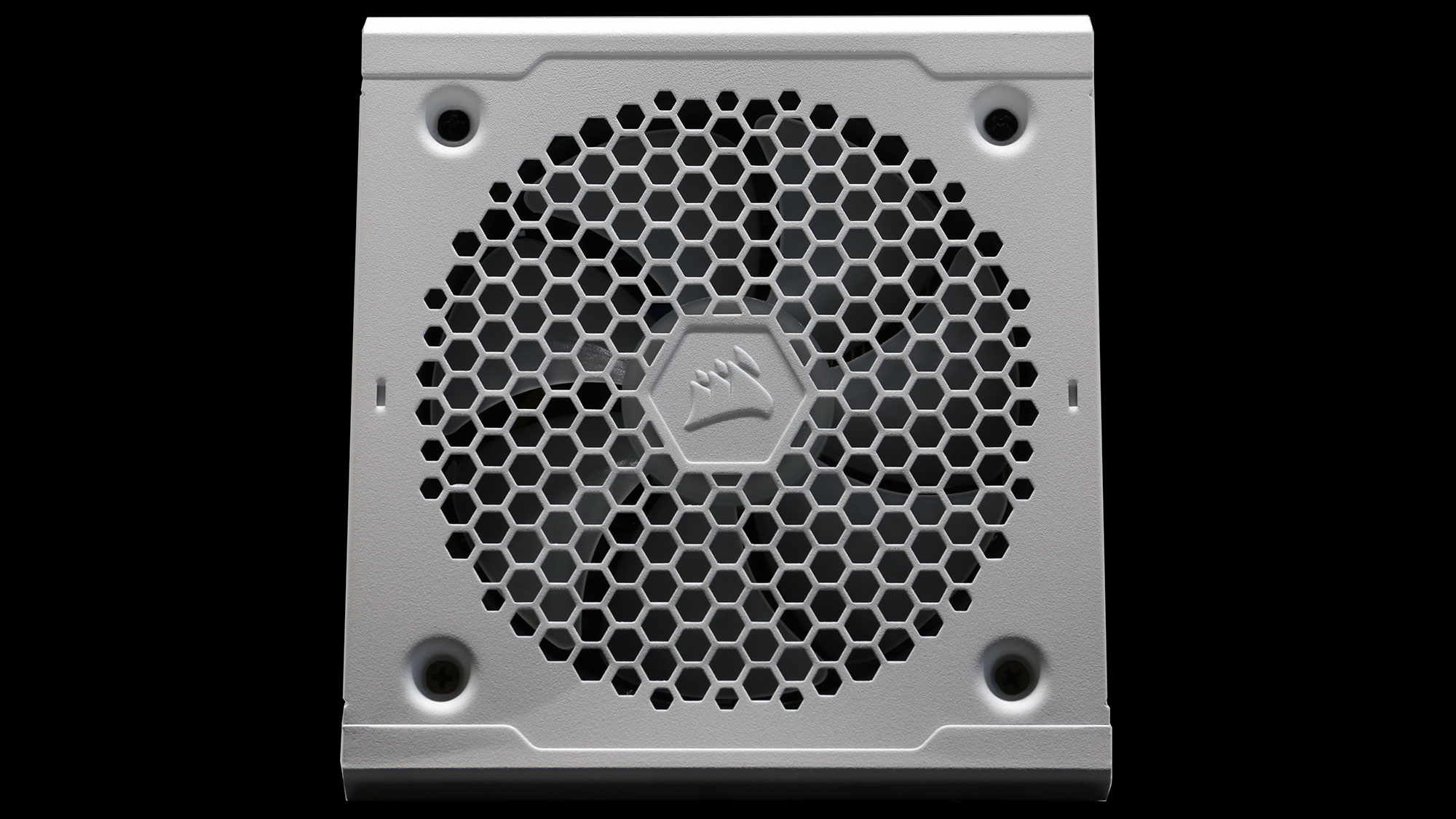
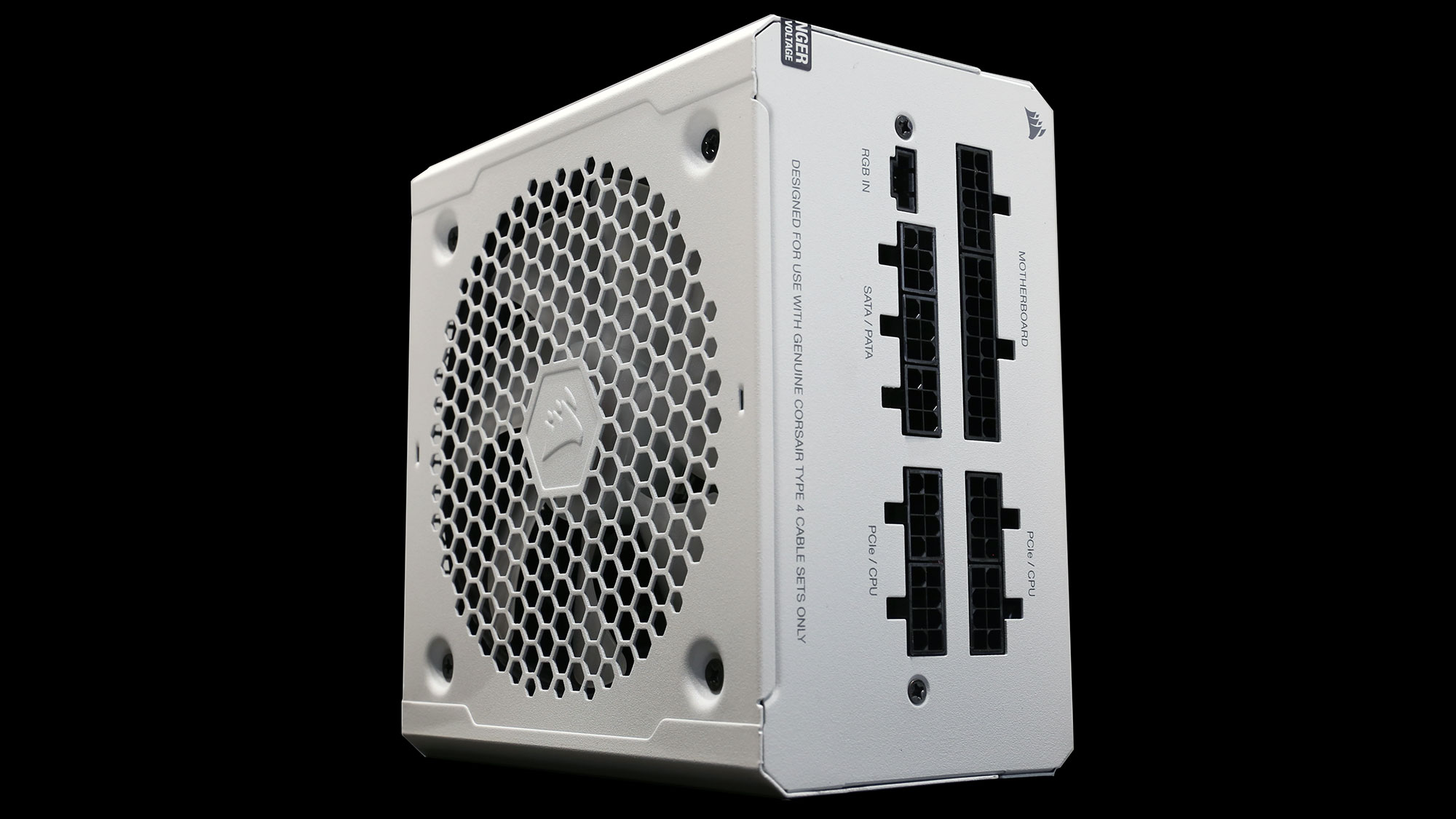
The CX750F has a bronze efficiency rating in the 80 Plus standard, while Gold is in the Cybenetics scheme. It also has a Cybenetics-Standard++ noise rating, with close to 35 dBA average noise output. Given its high-efficiency levels, this unit could have a more relaxed fan speed profile. The 120mm cooling fan, besides ARGB lighting, is also equipped with a rifle bearing, which won't have a problem outliving the five-year warranty under normal conditions.
There is a push-button at the PSU's front side through which you can manually set the fan's RGB lighting. You have to press and hold this button for three seconds for the lighting mode to change. With a short press, it will cycle through the available colors if the mode is not set to rainbow. The manual control is unavailable when the PSU is controlled through software, either iCUE or your mainboard's RGB software.
The available lighting modes are the following:
- Rainbow wave
- Rainbow
- Rainbow breathe
- Rainbow blink
- Sequential
- Solid
- Single blink
- Pulse
- Off
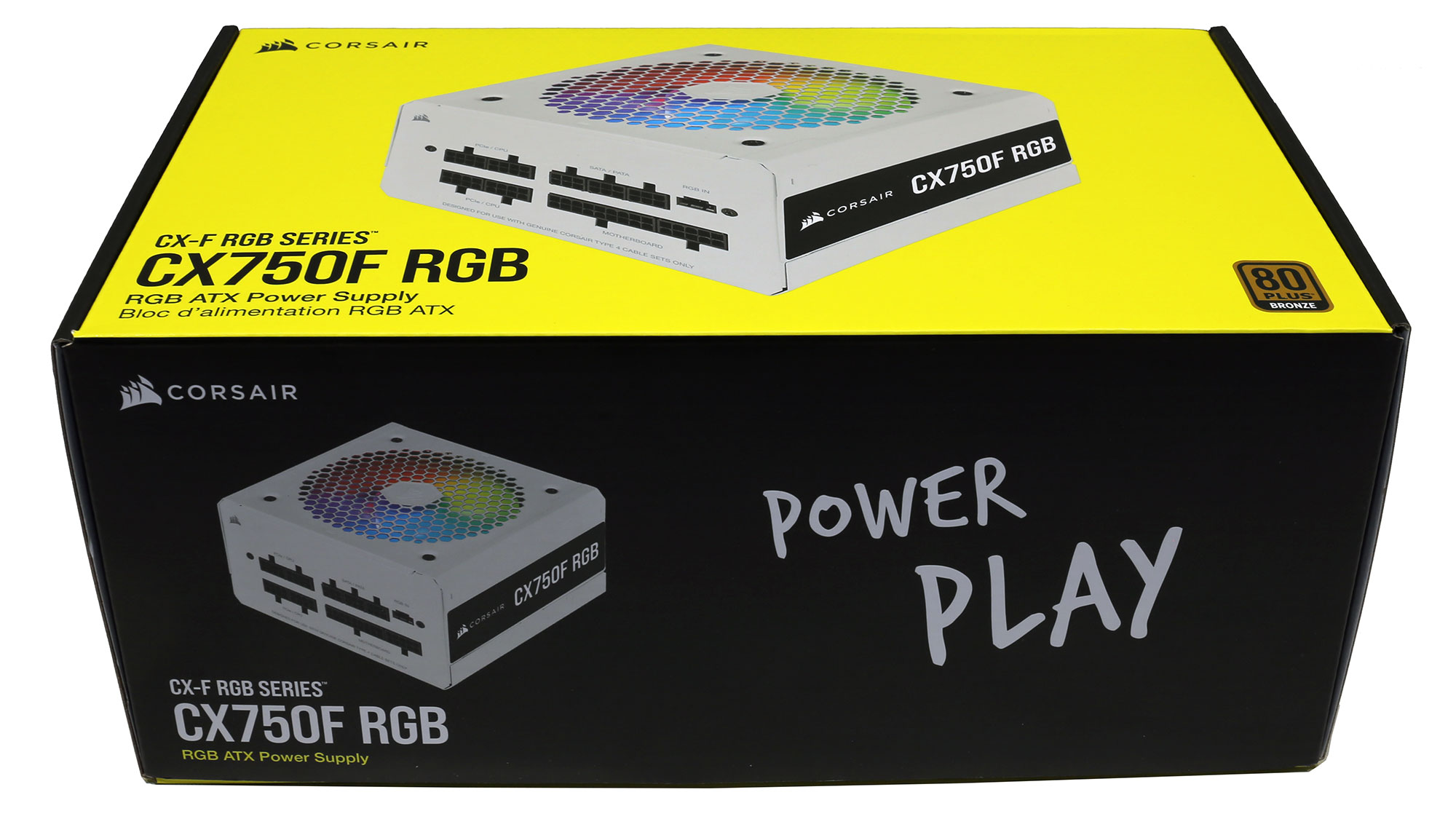
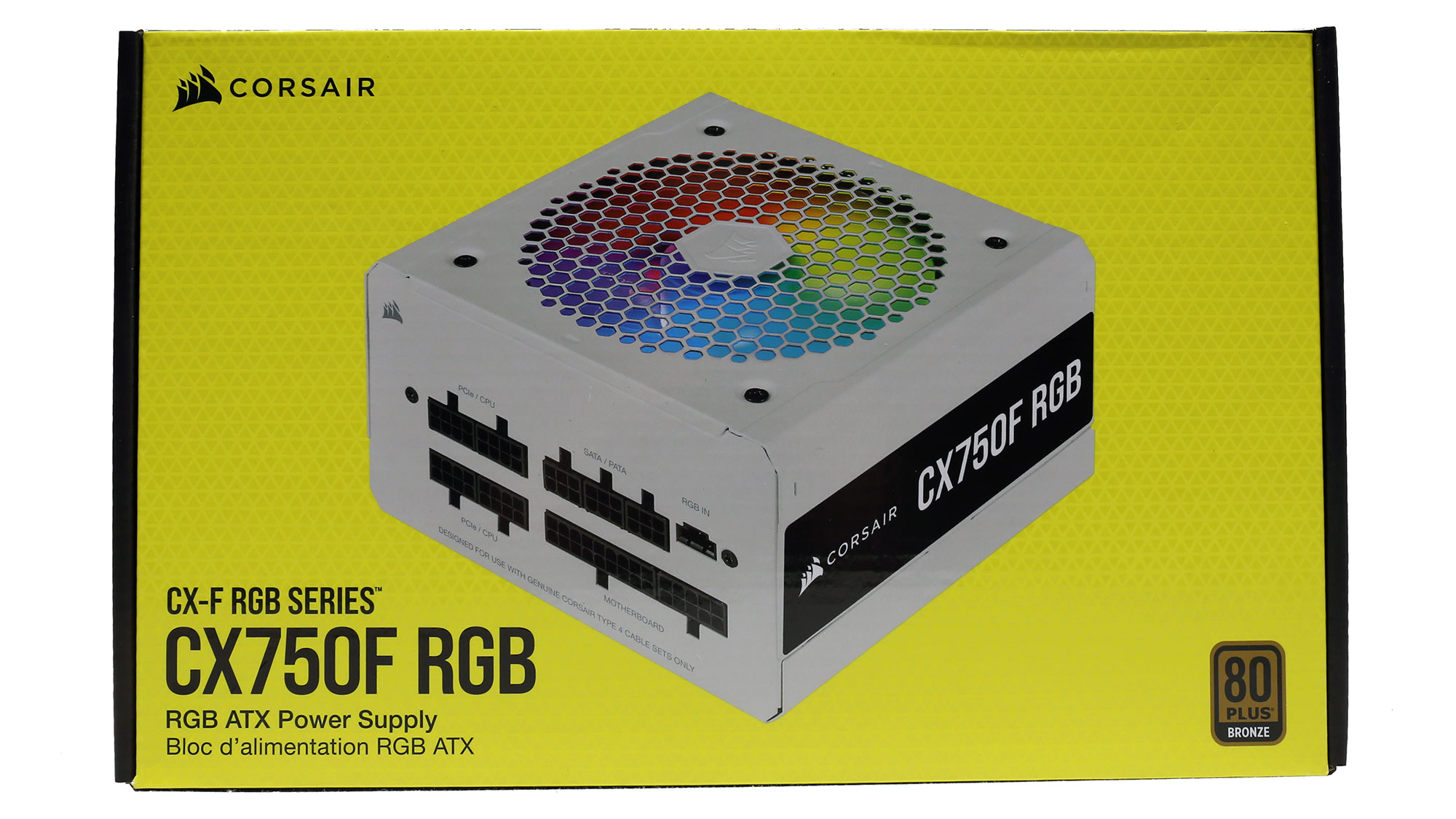


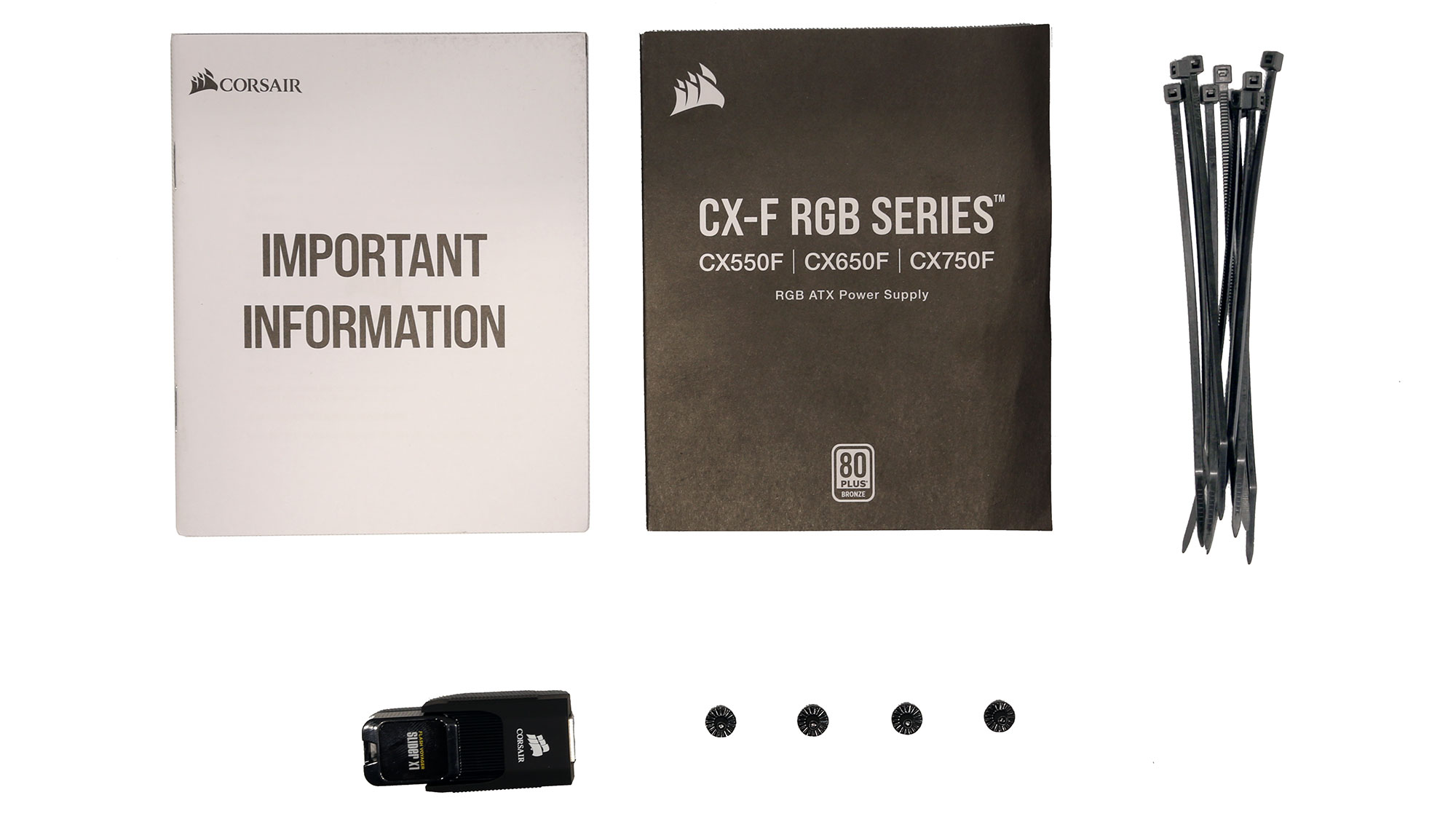
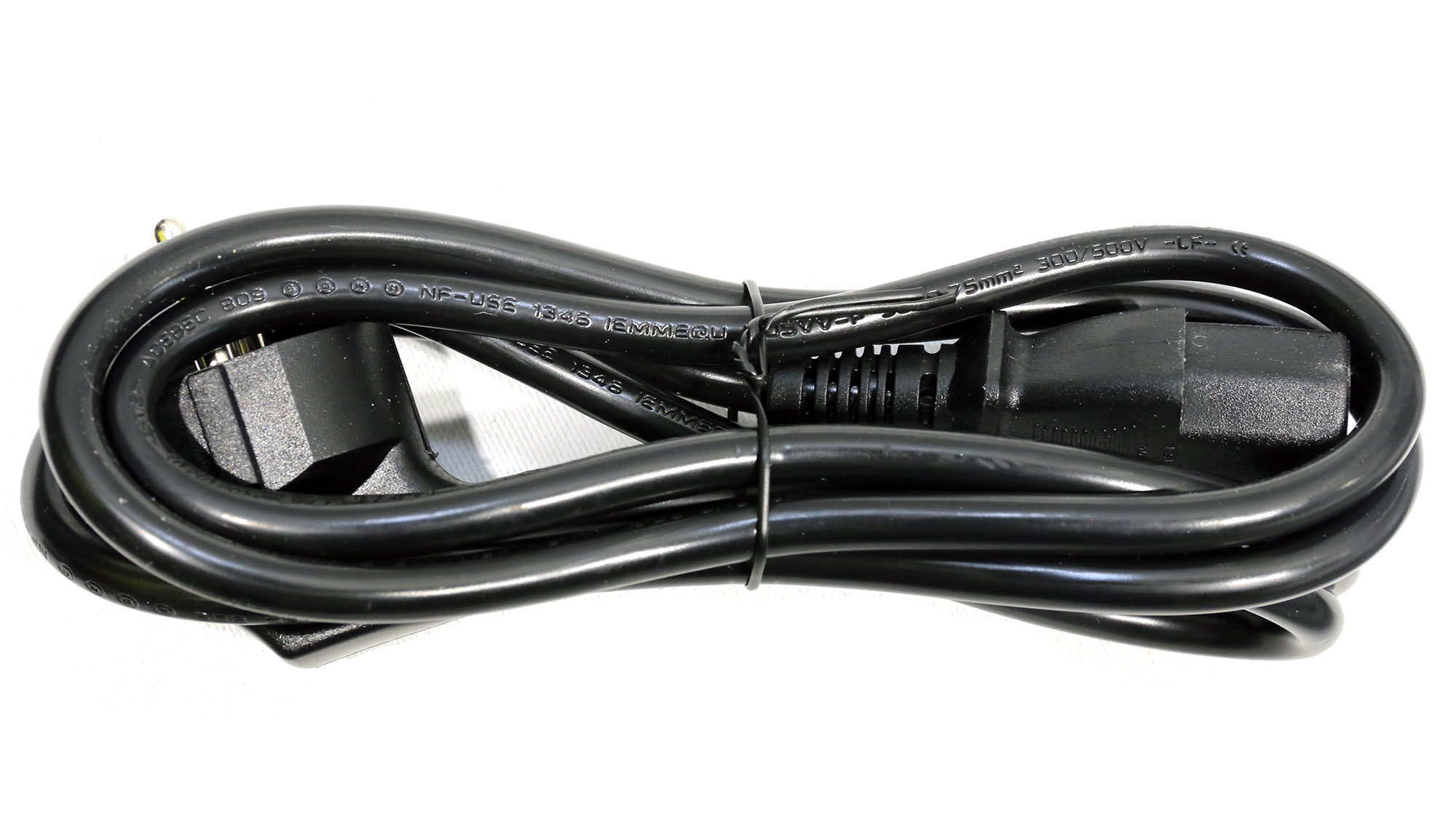
Specifications of Corsair CX750F
|
Manufacturer (OEM) |
HEC |
|
Max. DC Output |
750W |
|
Efficiency | 80 PLUS Bronze, Cybenetics-Gold |
|
Noise | Cybenetics-Standard++ (30-35 dB[A]) |
|
Modular |
✓ (Fully) |
|
Intel C6/C7 Power State Support |
✓ |
|
Operating Temperature (Continuous Full Load) |
0 - 50°C |
|
Over Voltage Protection |
✓ |
|
Under Voltage Protection |
✓ |
|
Over Power Protection |
✓ |
|
Over Current (+12V) Protection |
✓ |
|
Over Temperature Protection |
✓ |
|
Short Circuit Protection |
✓ |
|
Surge Protection |
✓ |
|
Inrush Current Protection |
✓ |
|
Fan Failure Protection |
✗ |
|
No Load Operation |
✓ |
|
Cooling |
120mm Rifle Bearing Fan (NR120L) |
|
Semi-Passive Operation |
✗ |
|
Dimensions (W x H x D) |
150 x 85 x 140mm |
|
Weight |
1.4 kg (3.09 lb) |
|
Form Factor |
ATX12V v2.4, EPS 2.92 |
|
Warranty | 5-years |
Power Specifications of Corsair CX750F
| Rail | Row 0 - Cell 1 | 3.3V | 5V | 12V | 5VSB | -12V |
| Max. Power | Amps | 20 | 20 | 62.5 | 3 | 0.3 |
| Watts | Row 2 - Cell 1 | 130 | Row 2 - Cell 3 | 750 | 15 | 3.6 |
| Total Max. Power (W) | 750 | Row 3 - Cell 2 | Row 3 - Cell 3 | Row 3 - Cell 4 | Row 3 - Cell 5 | Row 3 - Cell 6 |
Cables & Connectors for Corsair CX750F
| Description | Cable Count | Connector Count (Total) | Gauge | In Cable Capacitors |
|---|---|---|---|---|
| ATX connector 20+4 pin (610mm) | 1 | 1 | 18-20AWG | No |
| 4+4 pin EPS12V (650mm) | 2 | 2 | 18AWG | No |
| 6+2 pin PCIe (600mm+150mm) | 2 | 4 | 16-18AWG | No |
| SATA (450mm+115mm+115mm+115mm) | 2 | 8 | 18AWG | No |
| 4 pin Molex (450mm+100mm+100mm+100mm) | 1 | 4 | 18AWG | No |
| iCUE RGB cable (500mm) | 1 | 1 | 28AWG | No |
| Motherboard ARGB cable (300mm) | 1 | 1 | 28AWG | No |
| AC Power Cord (1380mm) - C13 coupler | 1 | 1 | 18AWG | - |
There are plenty of cables and connectors, including two EPS and four PCIe. The number of peripheral connectors is adequate, but we would like to see a longer distance between the 4-pin Molex ones. Besides the usual cables, we also find two cables through which you can connect the PSU to an iCUE compatible device or an ARGB mainboard header.
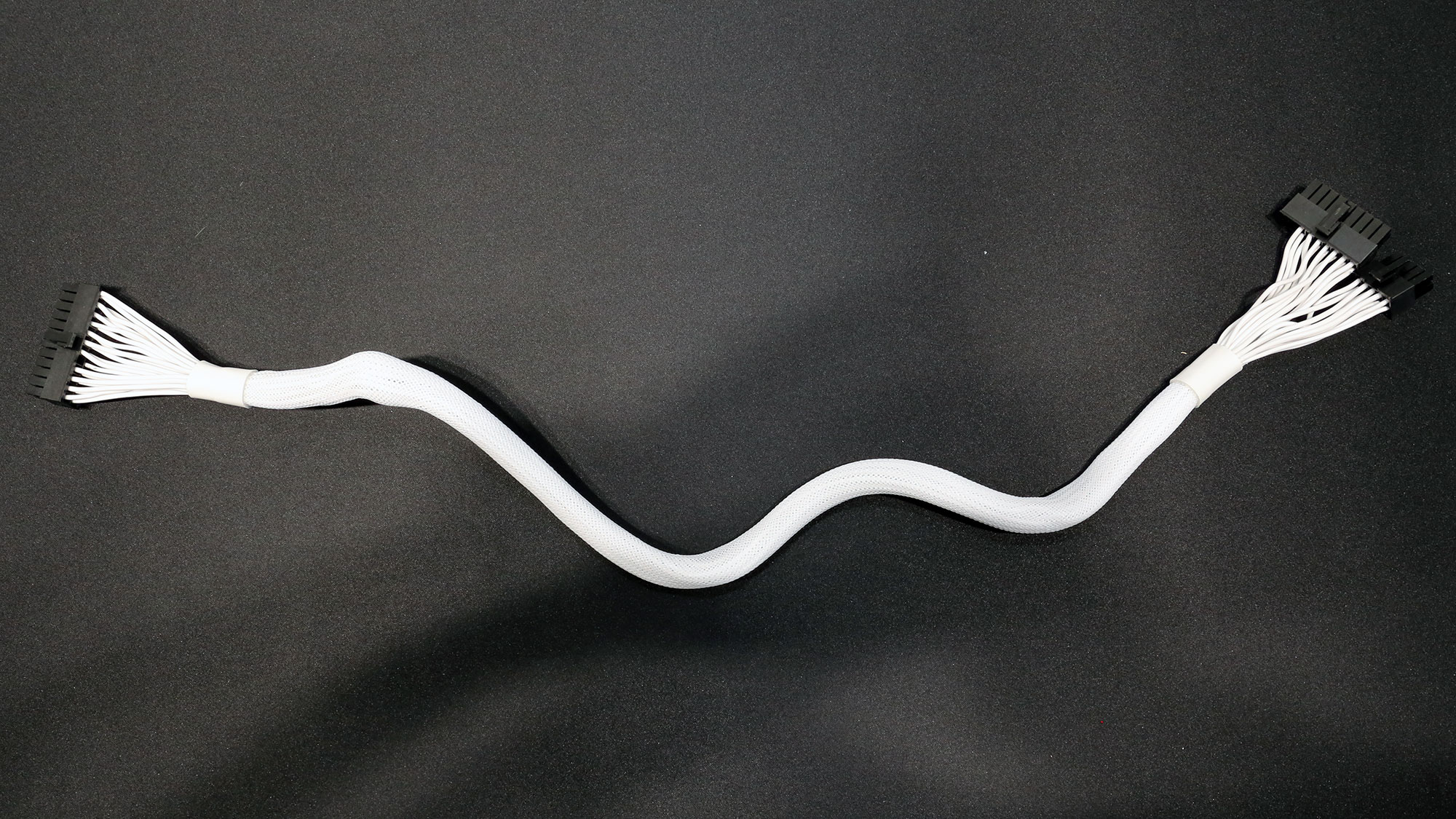
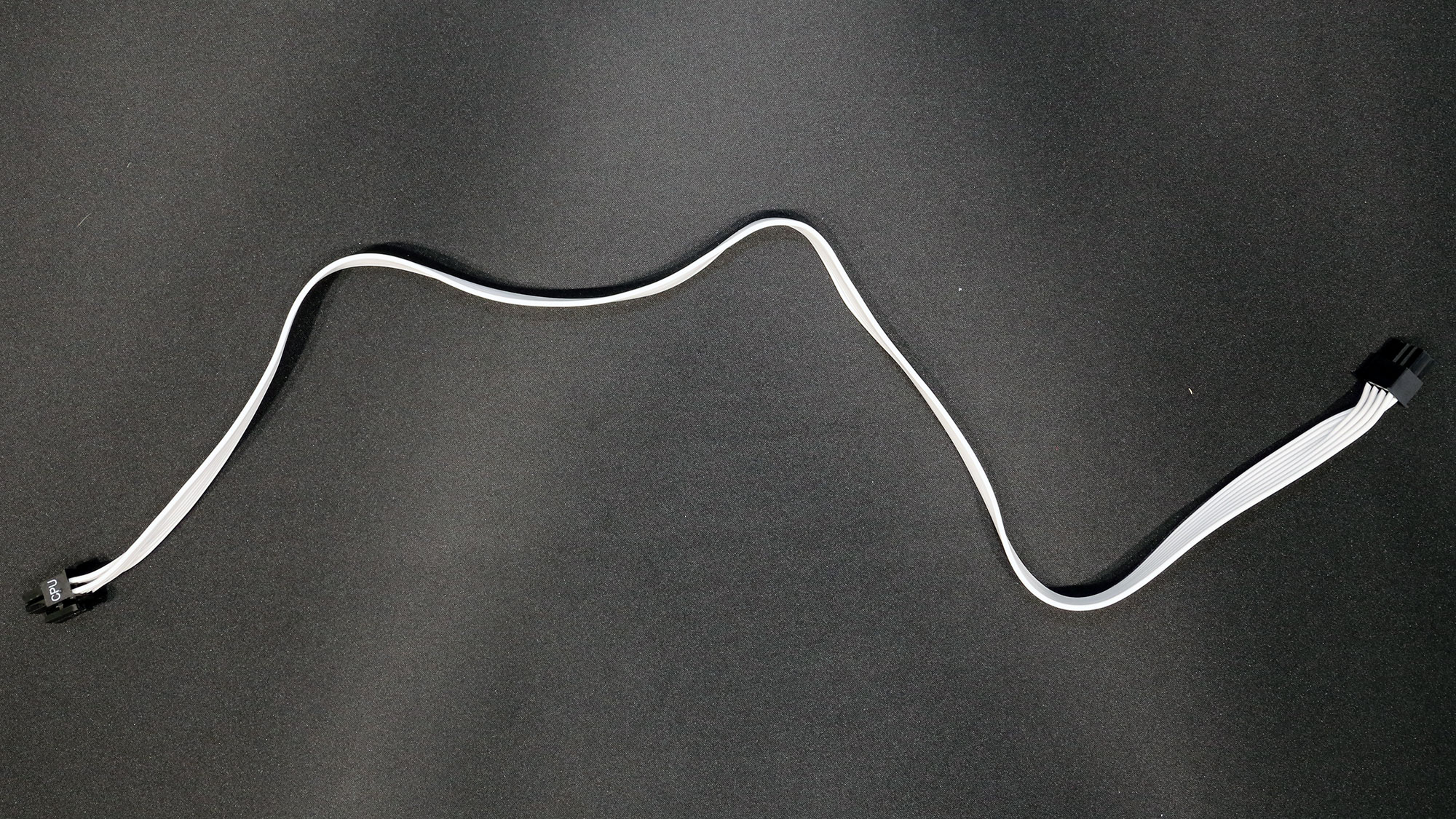
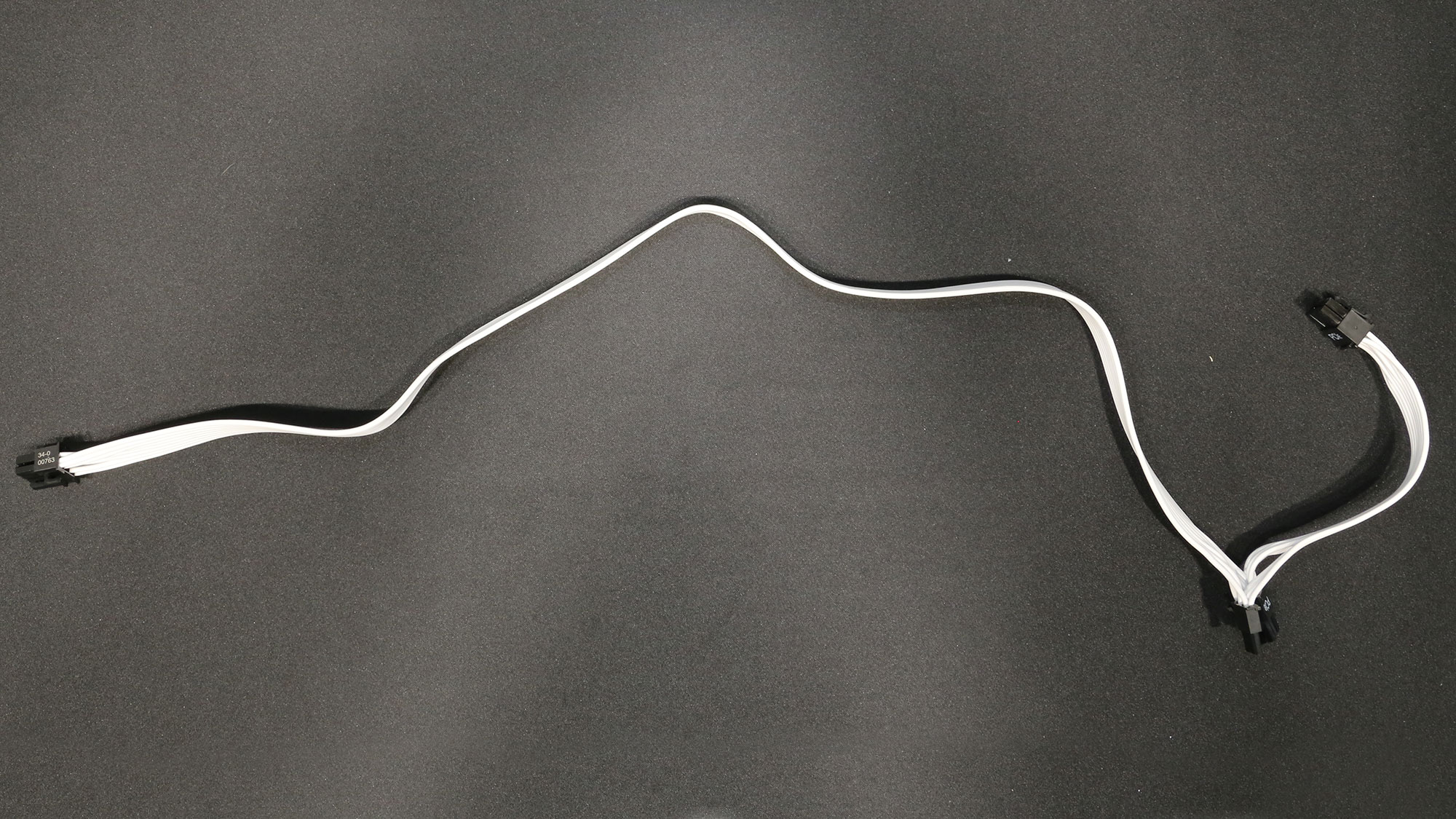
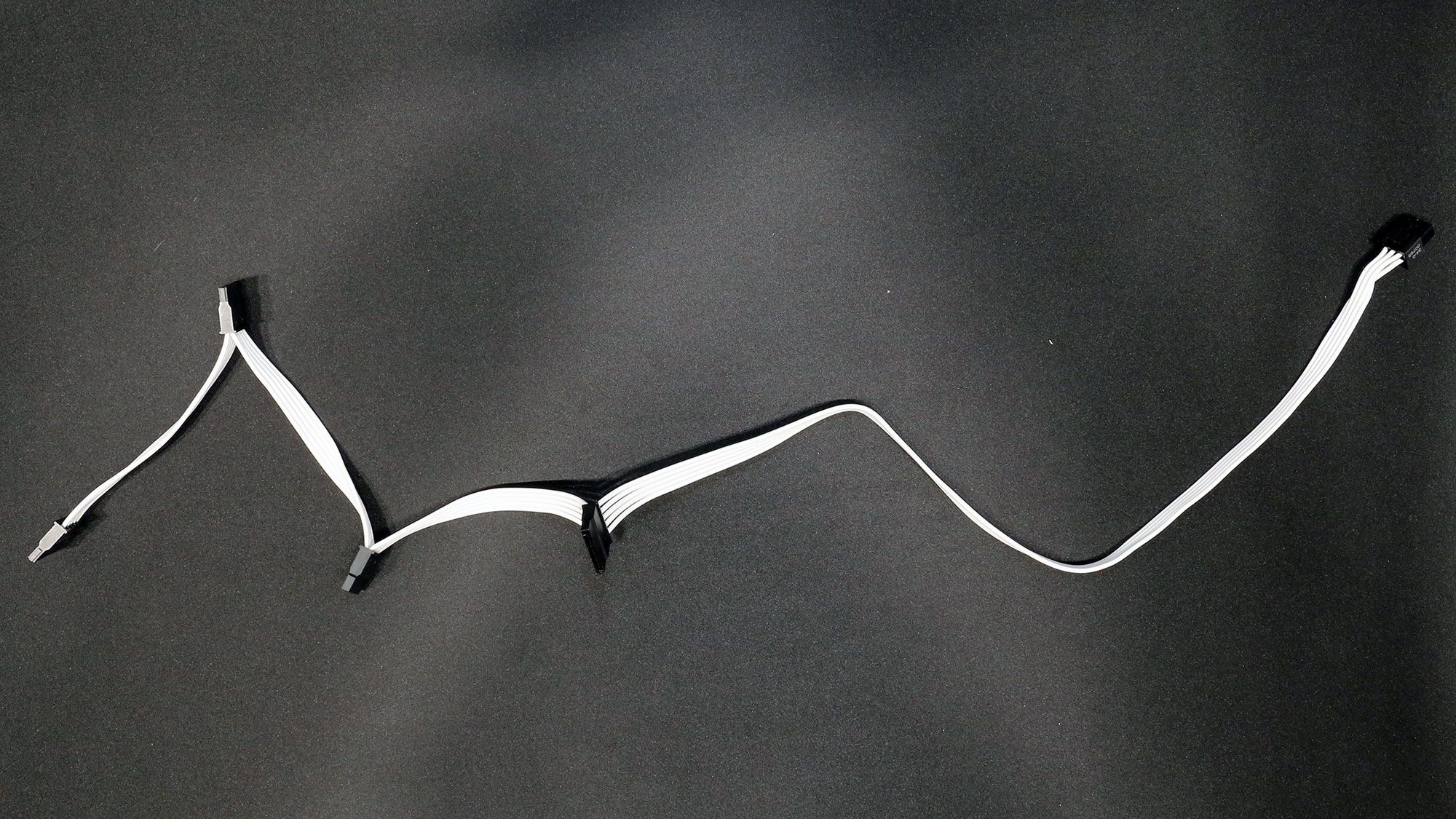
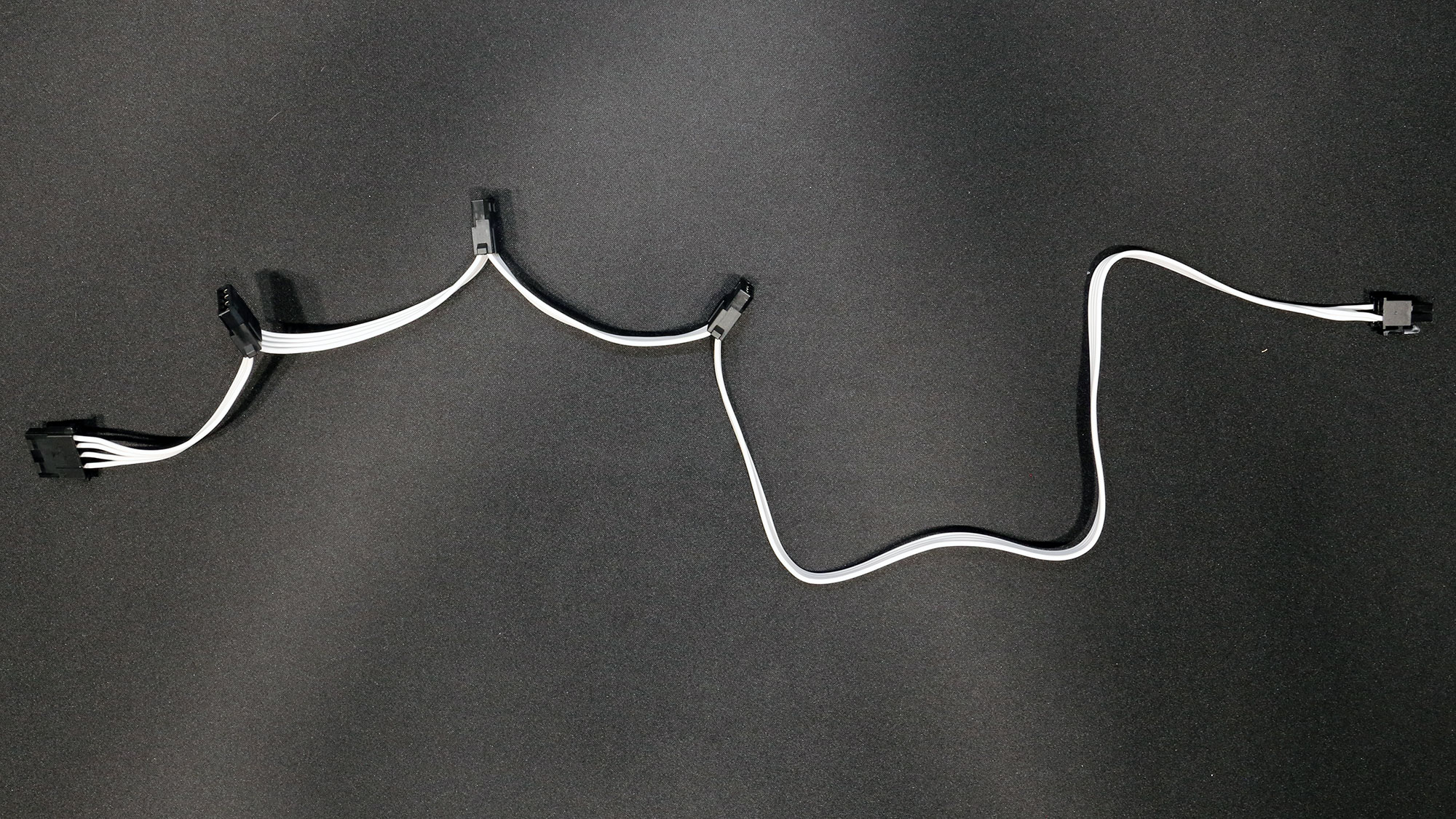
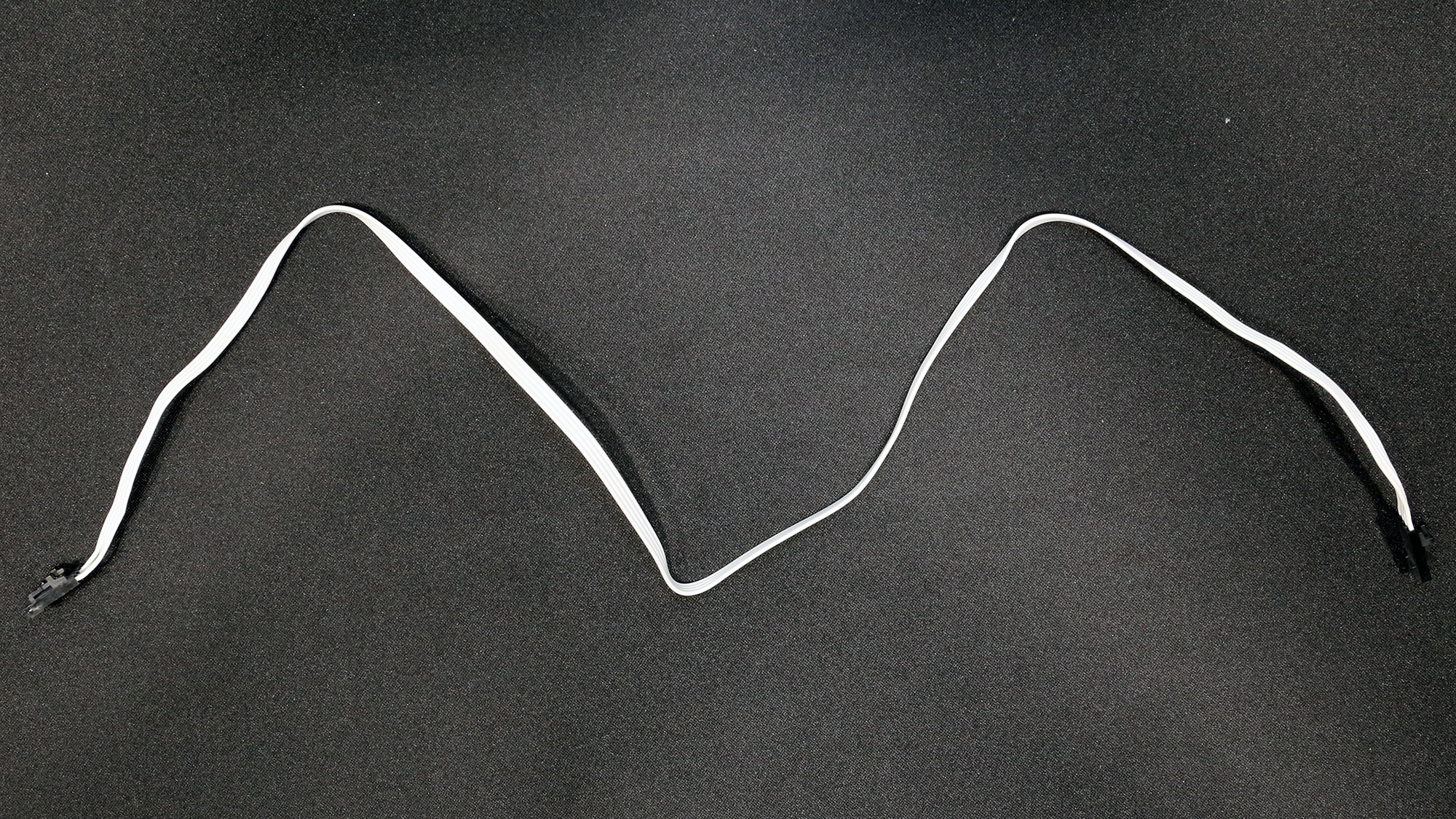
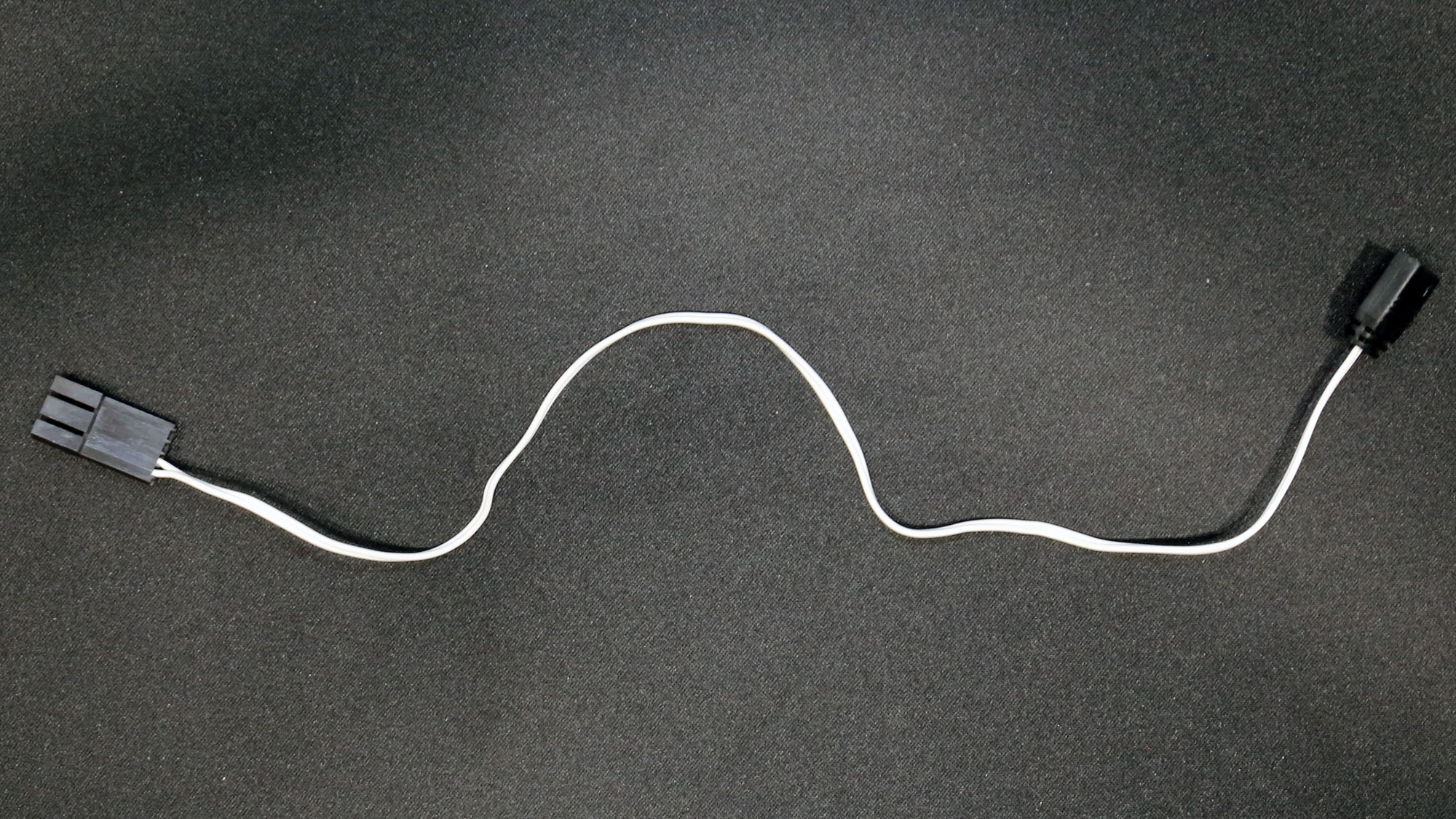
Component Analysis of Corsair CX750F
We strongly encourage you to have a look at our PSUs 101 article, which provides valuable information about PSUs and their operation, allowing you to better understand the components we're about to discuss.
Get Tom's Hardware's best news and in-depth reviews, straight to your inbox.
| General Data | - |
| Manufacturer (OEM) | HEC |
| PCB Type | Single Sided |
| Primary Side | - |
| Transient Filter | 4x Y caps, 3x X caps, 1x CM chokes, 1x DM chokes, 1x MOV, 1x Discharge IC (CAP200DG) |
| Inrush Protection | NTC Thermistor SCK-2R58 |
| Bridge Rectifier(s) | 2x GBU15K (800V, 15A @ 100°C) |
| APFC MOSFETs | 2x Infineon IPA60R120P7 (650V, 16A @ 100°C, 0.12Ohm) |
| APFC Boost Diode | 1x Infineon IDH06G65C6 (650V, 6A @ 145°C) |
| Hold-up Cap(s) | 1x Hitachi (400V, 470uF, 2,000h @ 105°C, HU) |
| Main Switchers | 2x Alpha & Omega AOTF22N50 (600V, 15A @ 100°C, 0.26Ohm) |
|
IC Driver |
MPS MP6924A |
| APFC Controller | Champion CM6500UNX & Champion CM03X |
| Resonant Controller | MPS HR1001C |
| Topology |
Primary side: APFC, Half-Bridge & LLC converter Secondary side: Synchronous Rectification & DC-DC converters |
| Secondary Side | - |
| +12V MOSFETs | 4x Nexperia PSMN2R6-40YS (40V, 100A @ 100°C, 5.3mOhm @ 175°C) |
| 5V & 3.3V | DC-DC Converters: 8x Potens Semiconductor PDD3906 (30V, 51A @ 100°C, 6mOhm) PWM Controllers: ANPEC APW7073 |
| Filtering Capacitors | Electrolytic: 12x Teapo (1-3,000h @ 105°C, SC) , 2x Nippon Chemi-Con (1-5,000h @ 105°C, KZE) Polymer: 18x Teapo |
| Supervisor IC | Weltrend WT7527 (OCP, OVP, UVP, SCP, PG) |
| Fan Model | Corsair NR120L (120mm, 12V, 0.22A, RGB, Rifle Bearing Fan) |
| 5VSB Circuit | - |
| Rectifier | 1x PS1060L SBR (60V, 10A) |
| Standby PWM Controller | Power Integrations TNY290PG |
| -12V | - |
| Rectifier | 1x KEC KIA7912PI (-12V, 1A) |


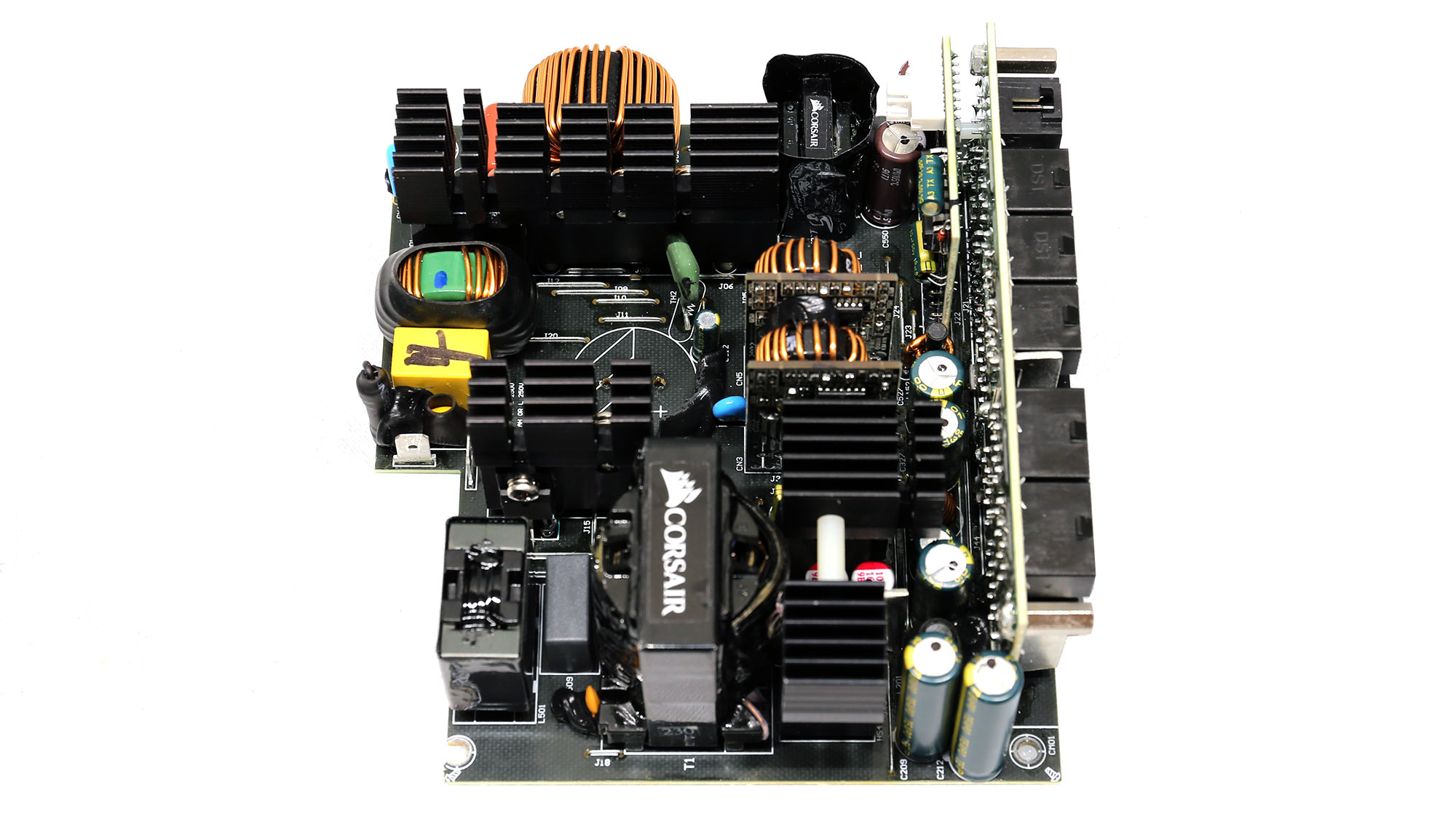

The platform is provided by HEC, which has vast experience in budget PSU builds. This platform looks overkill for only "Bronze" (Gold in Cybenetics) efficiency. HEC used a half-bridge topology and an LLC resonant converter on the primary side. In contrast, on the secondary side, we meet a synchronous design and DC-DC converters to generate the minor rails. The parts that HEC used are good, except the mainstream Teapo SC caps on the secondary side.

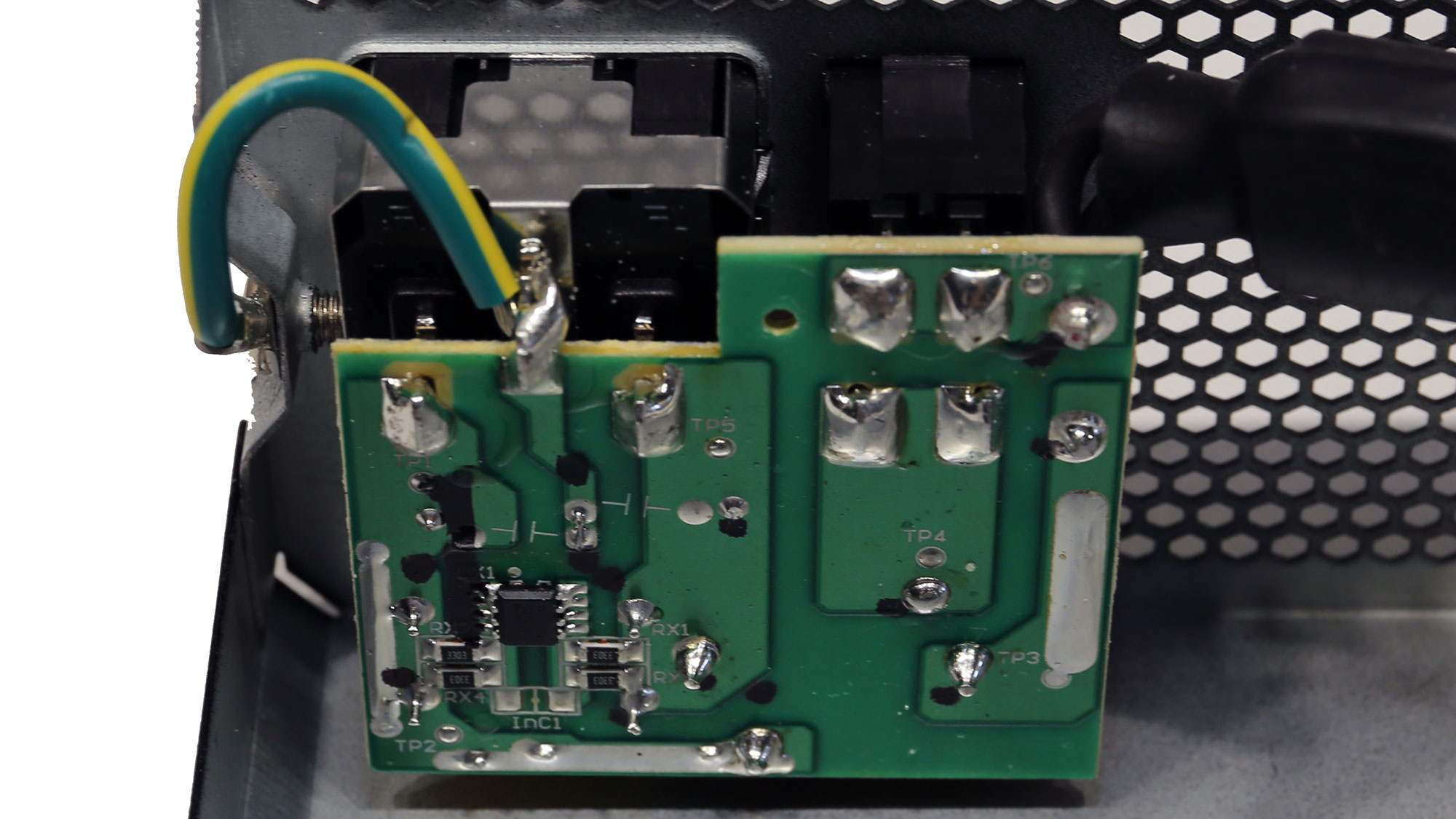
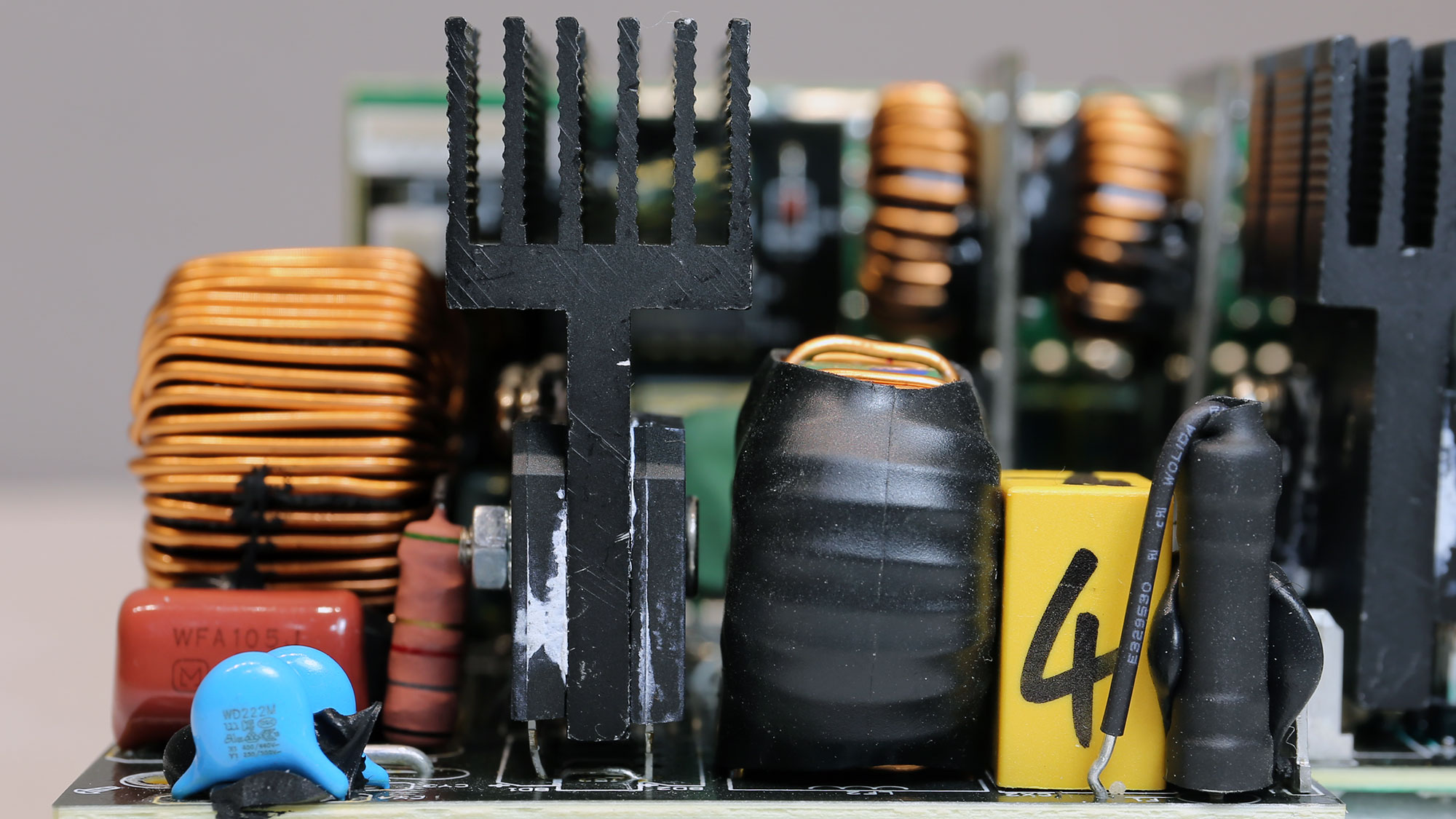
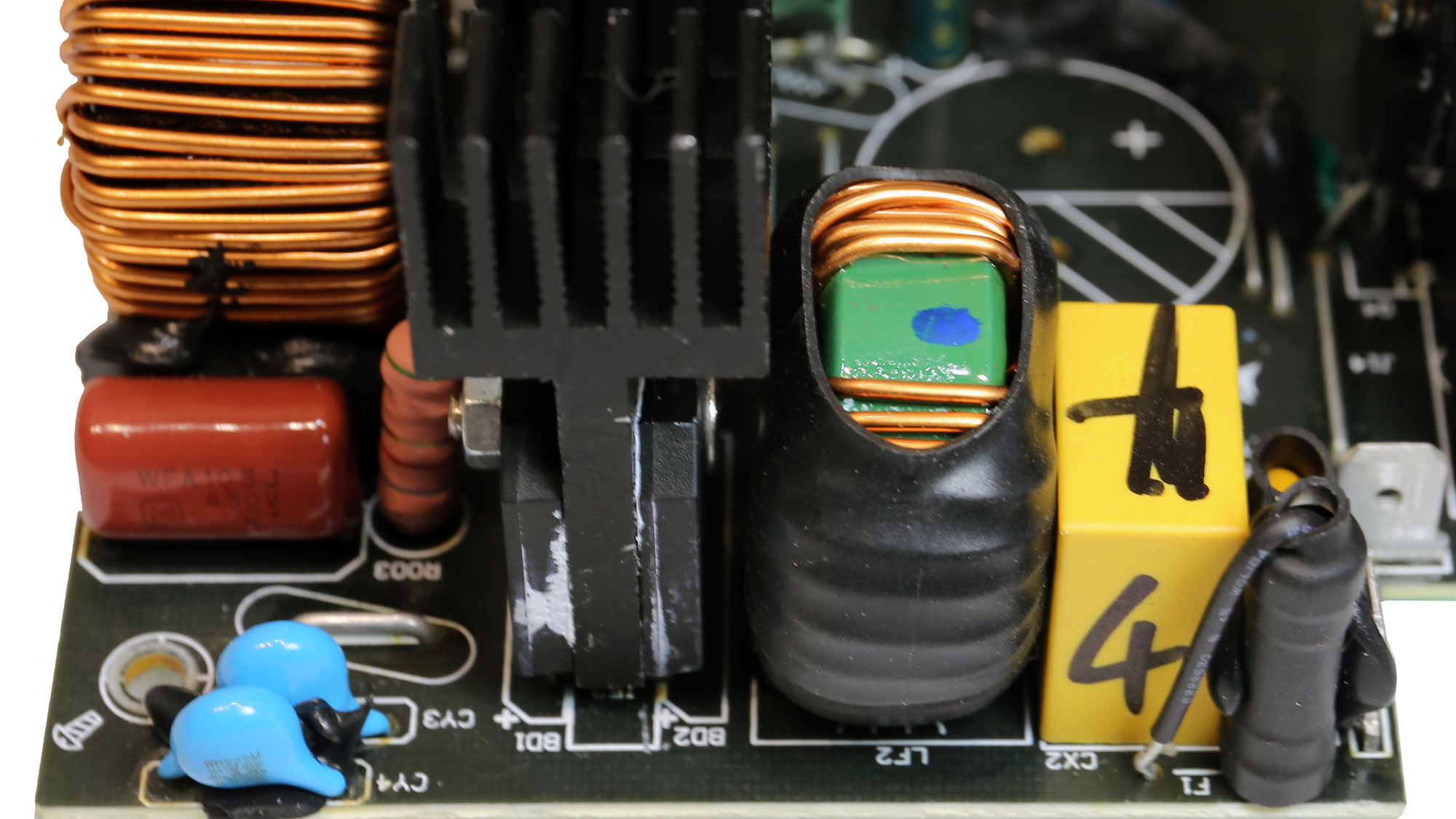
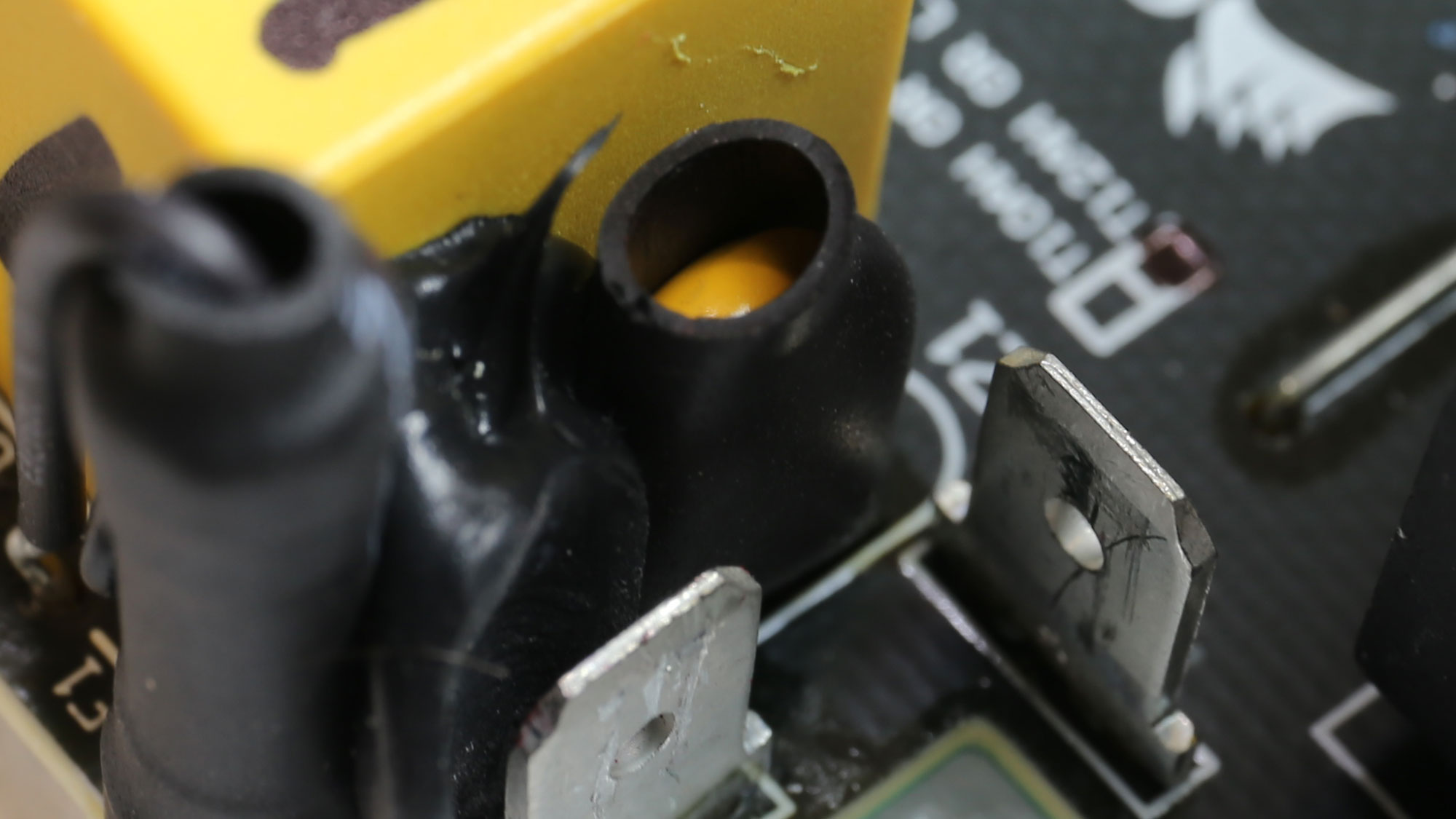

The transient/EMI filter has all necessary parts, including an MOV. There is also an NTC thermistor for suppressing large start-up (inrush) currents.
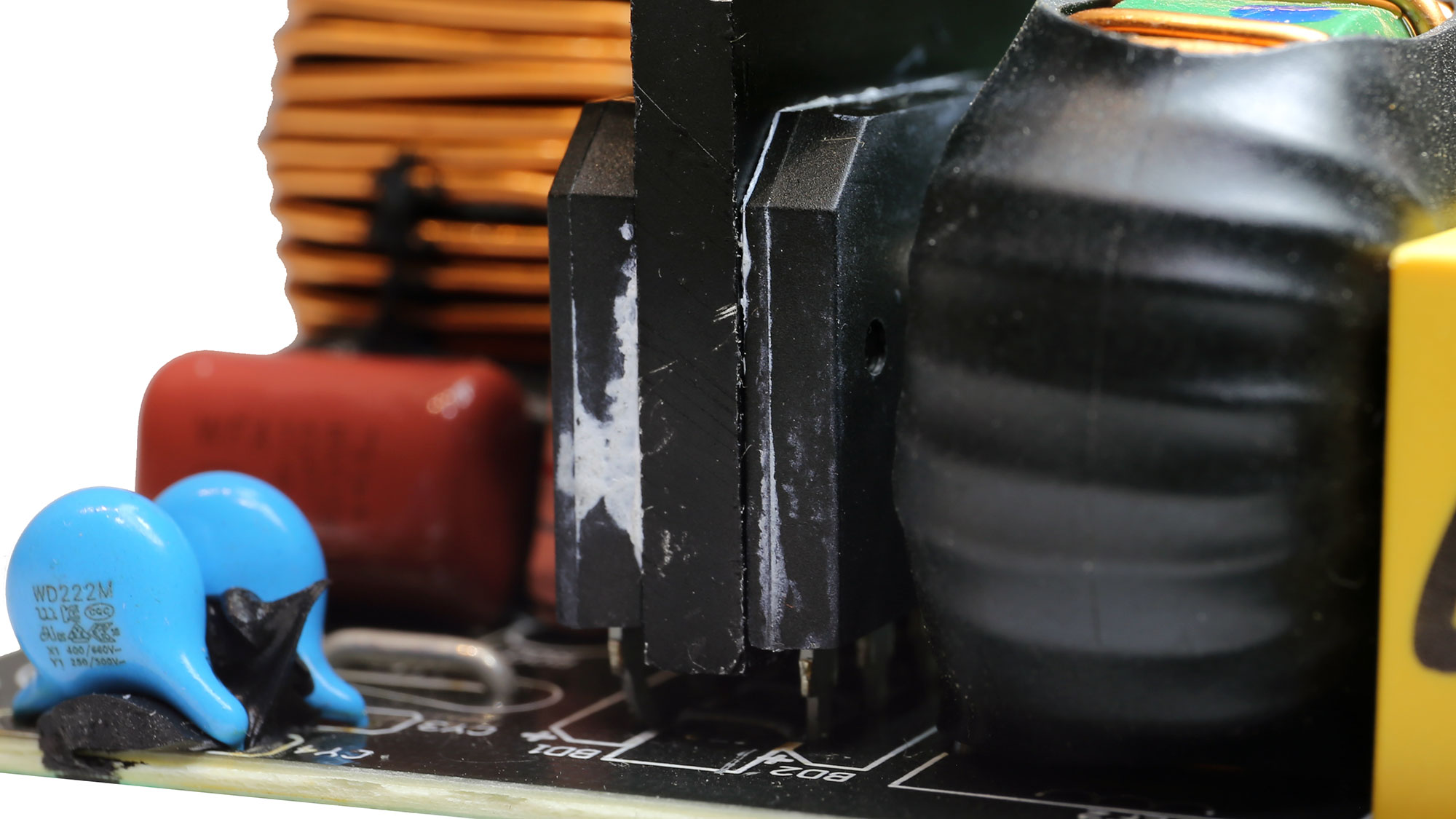
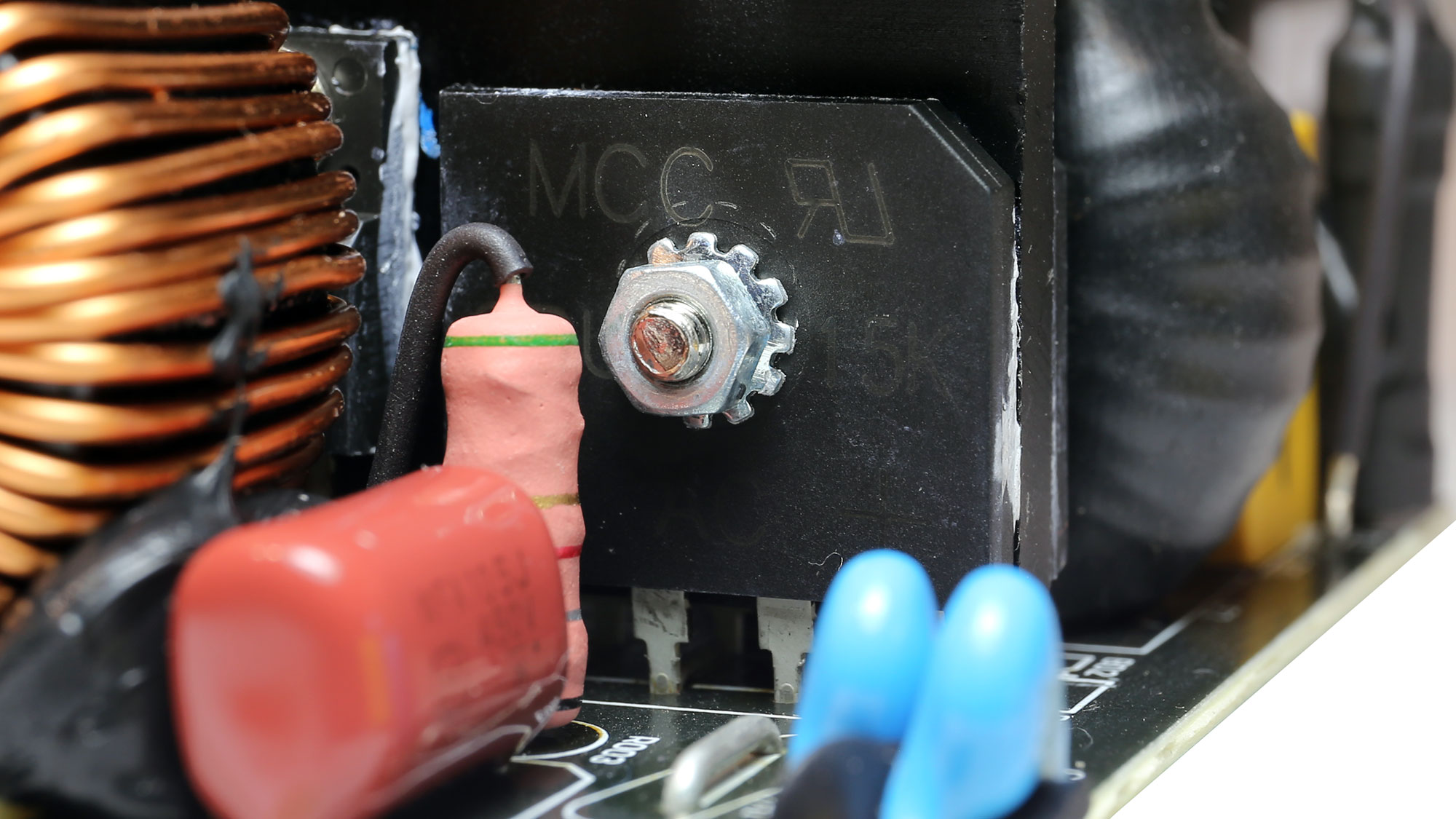
The pair of bridge rectifiers can handle up to 30A.
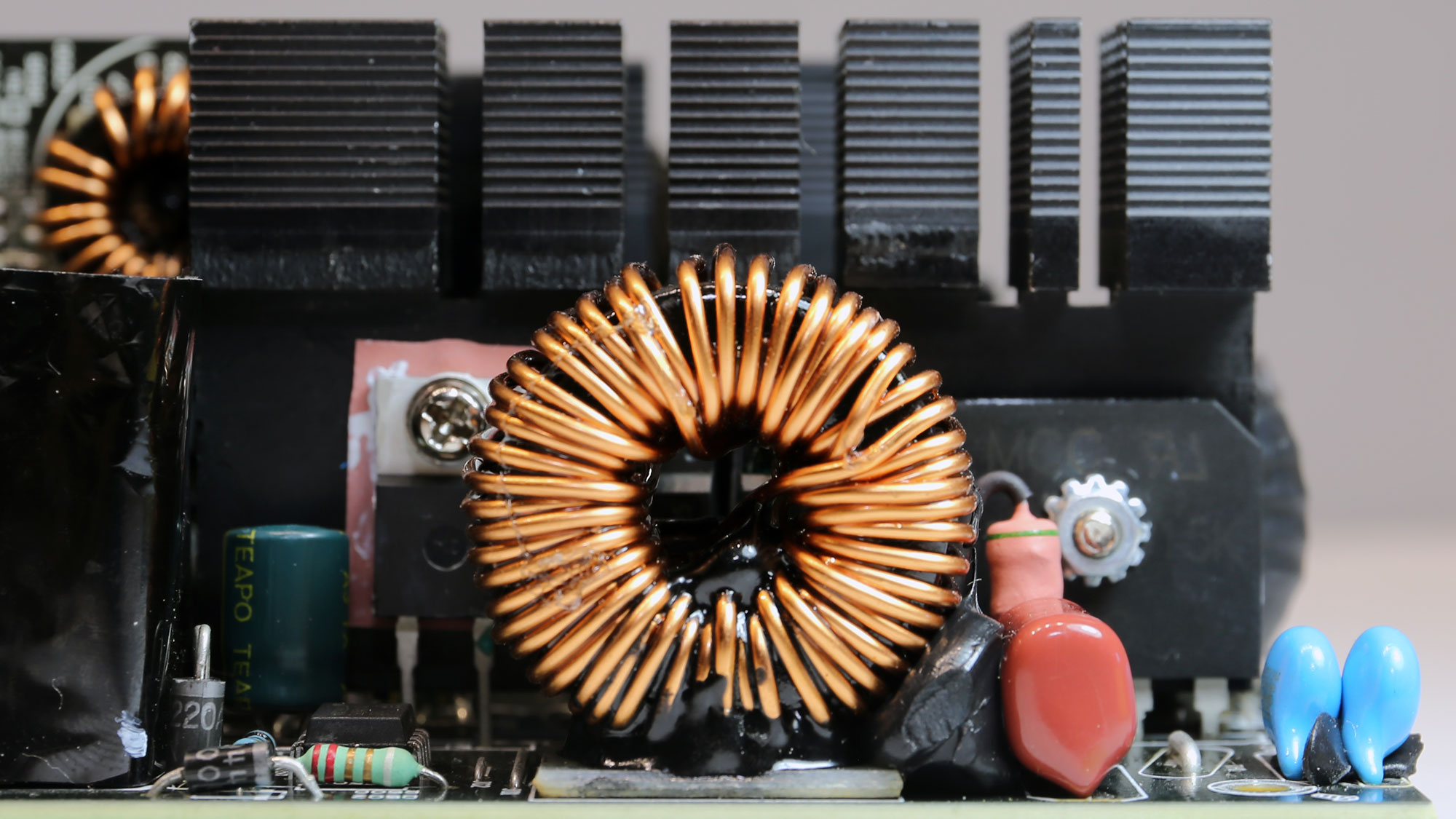
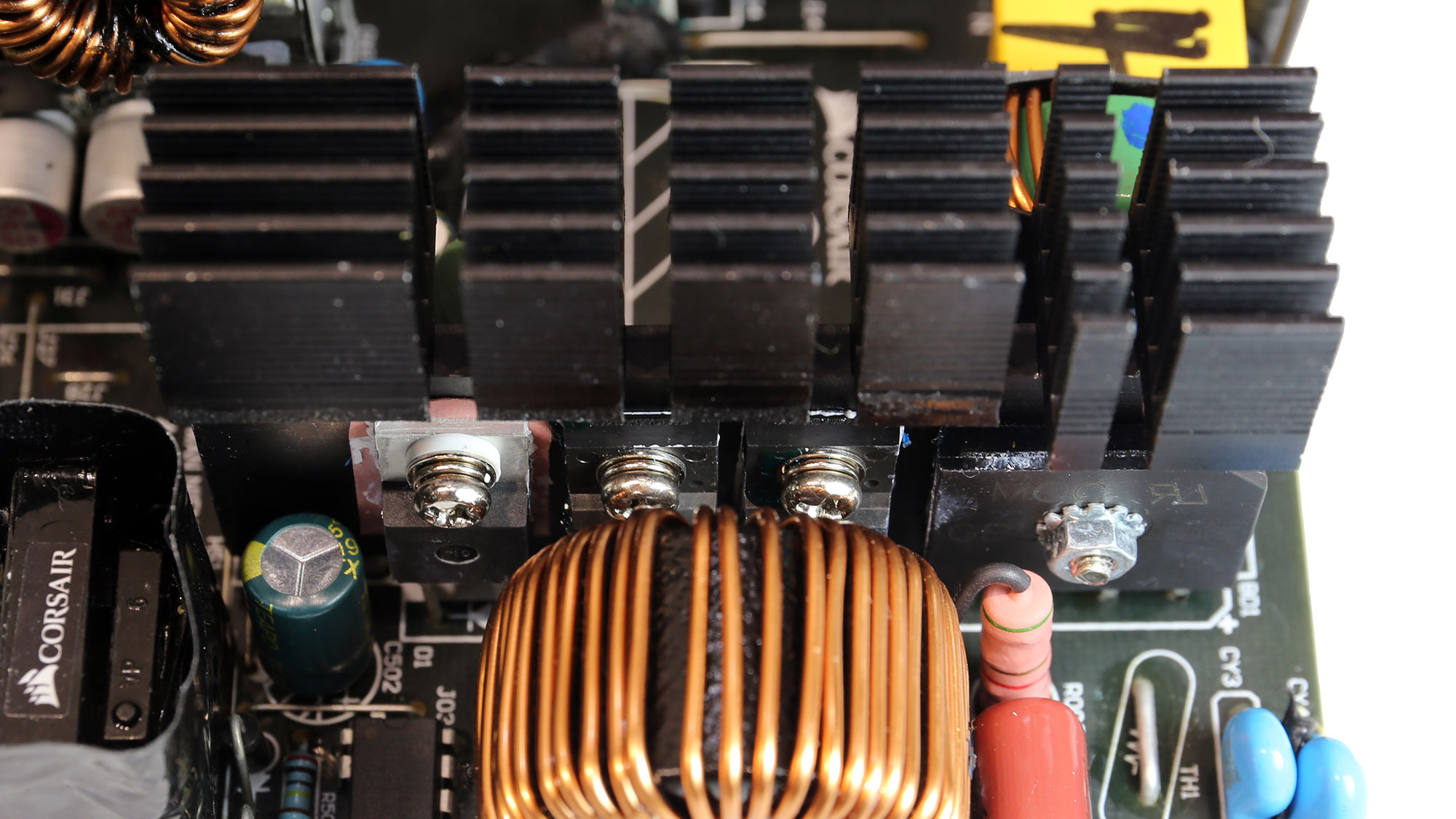
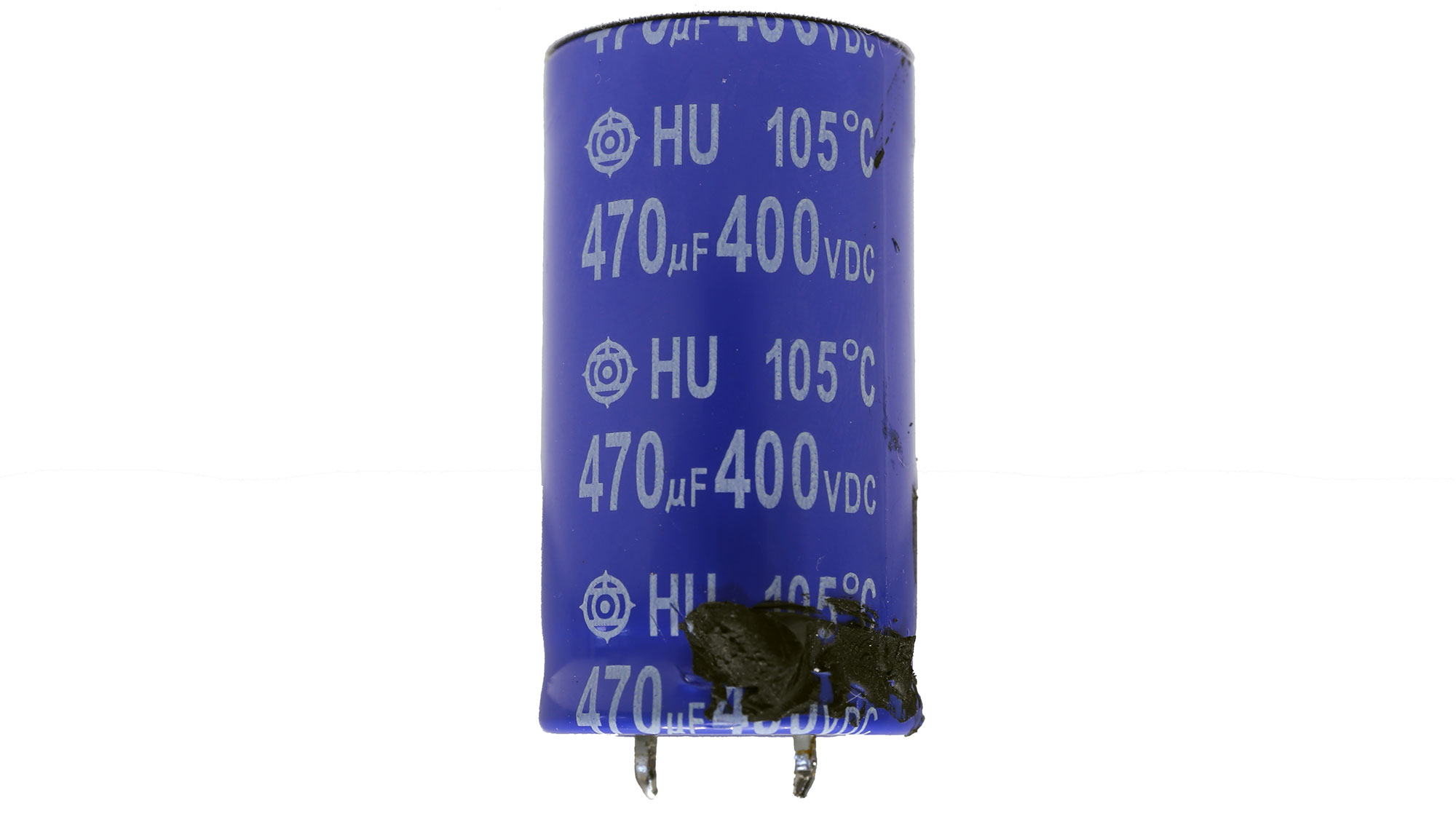

The APFC converter uses two Infineon FETs and a single boost diode provided by the same manufacturer. The Hitachi bulk cap doesn't have enough capacity to offer more than 17ms hold-up time.
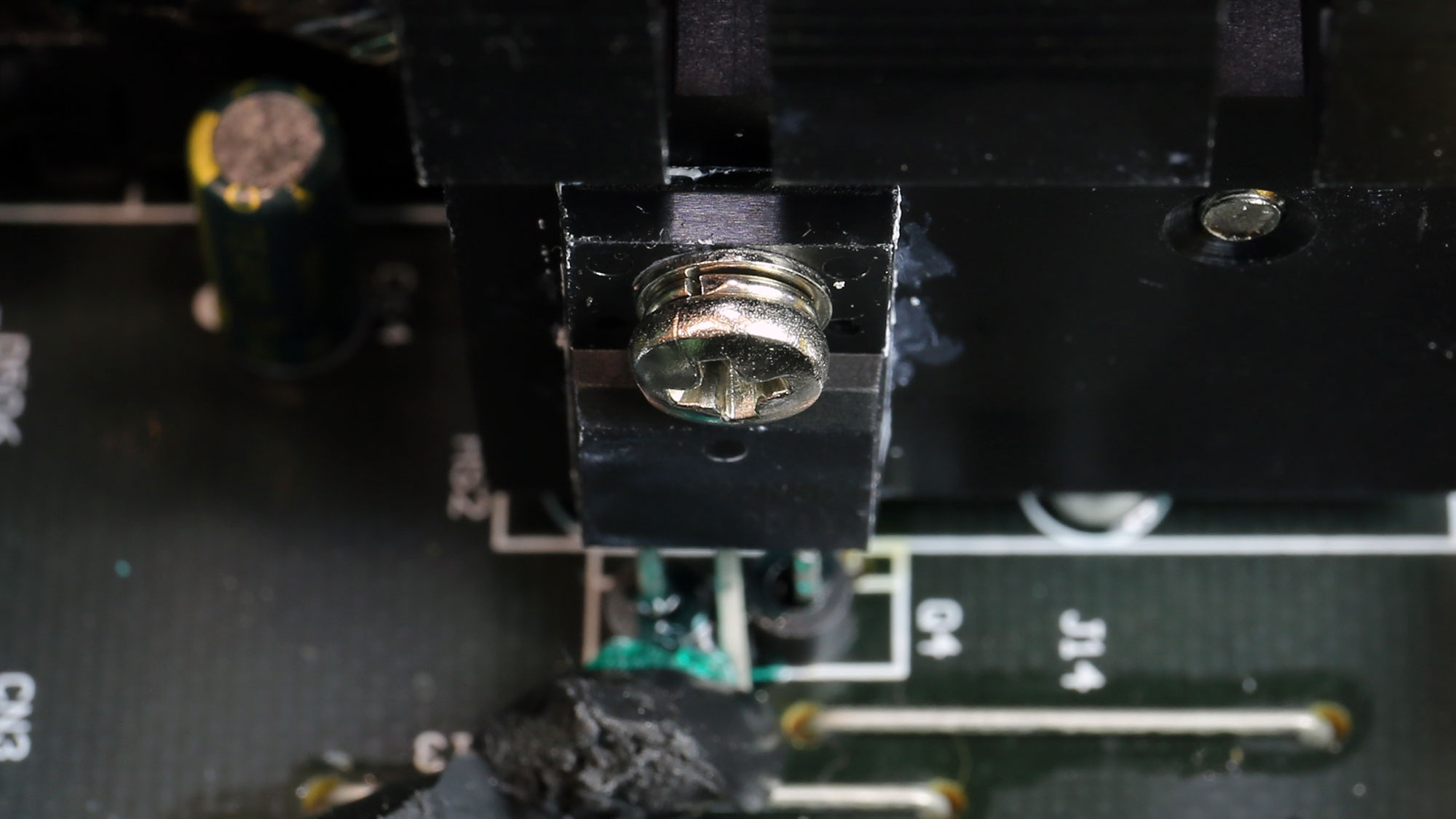

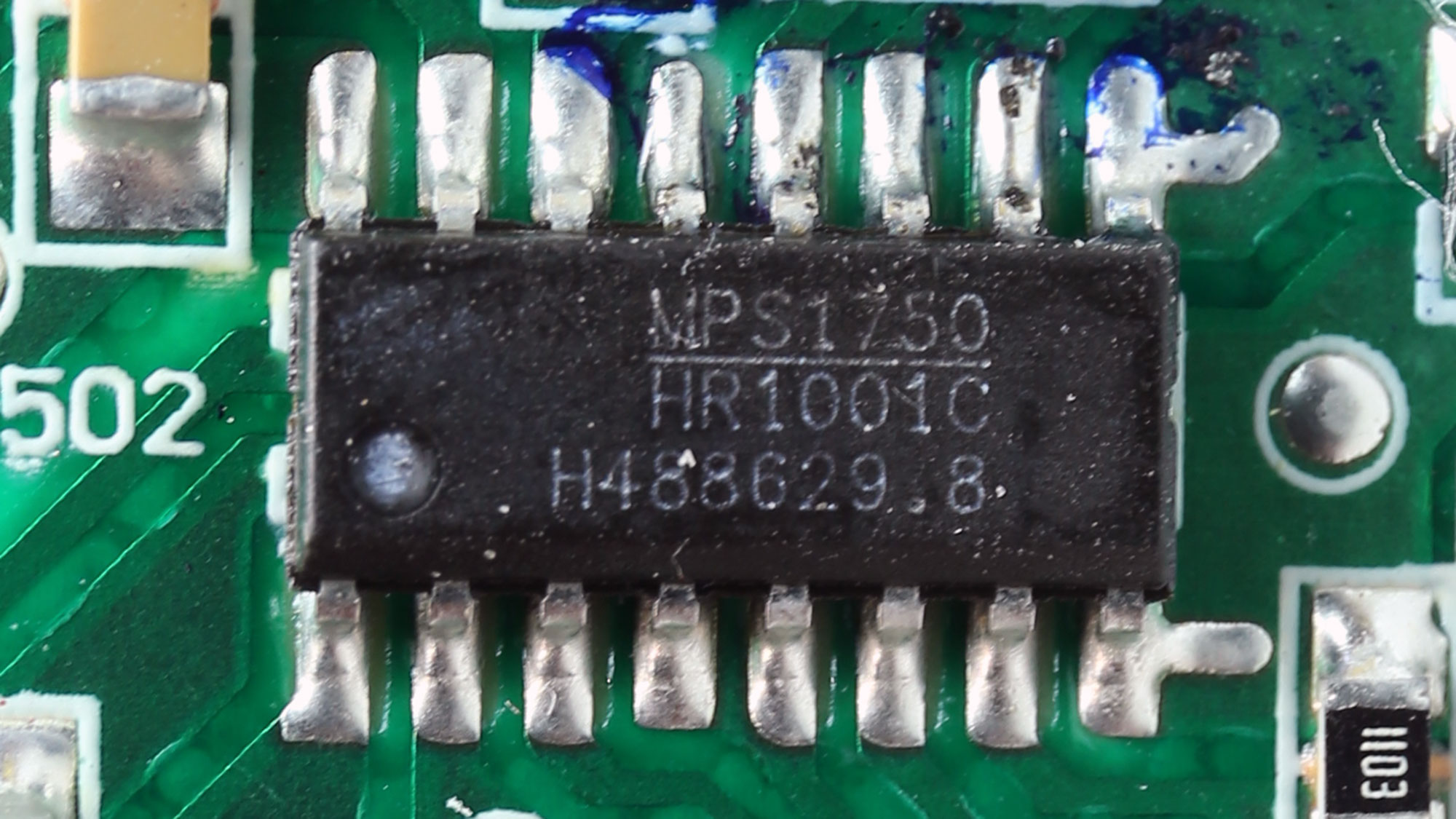
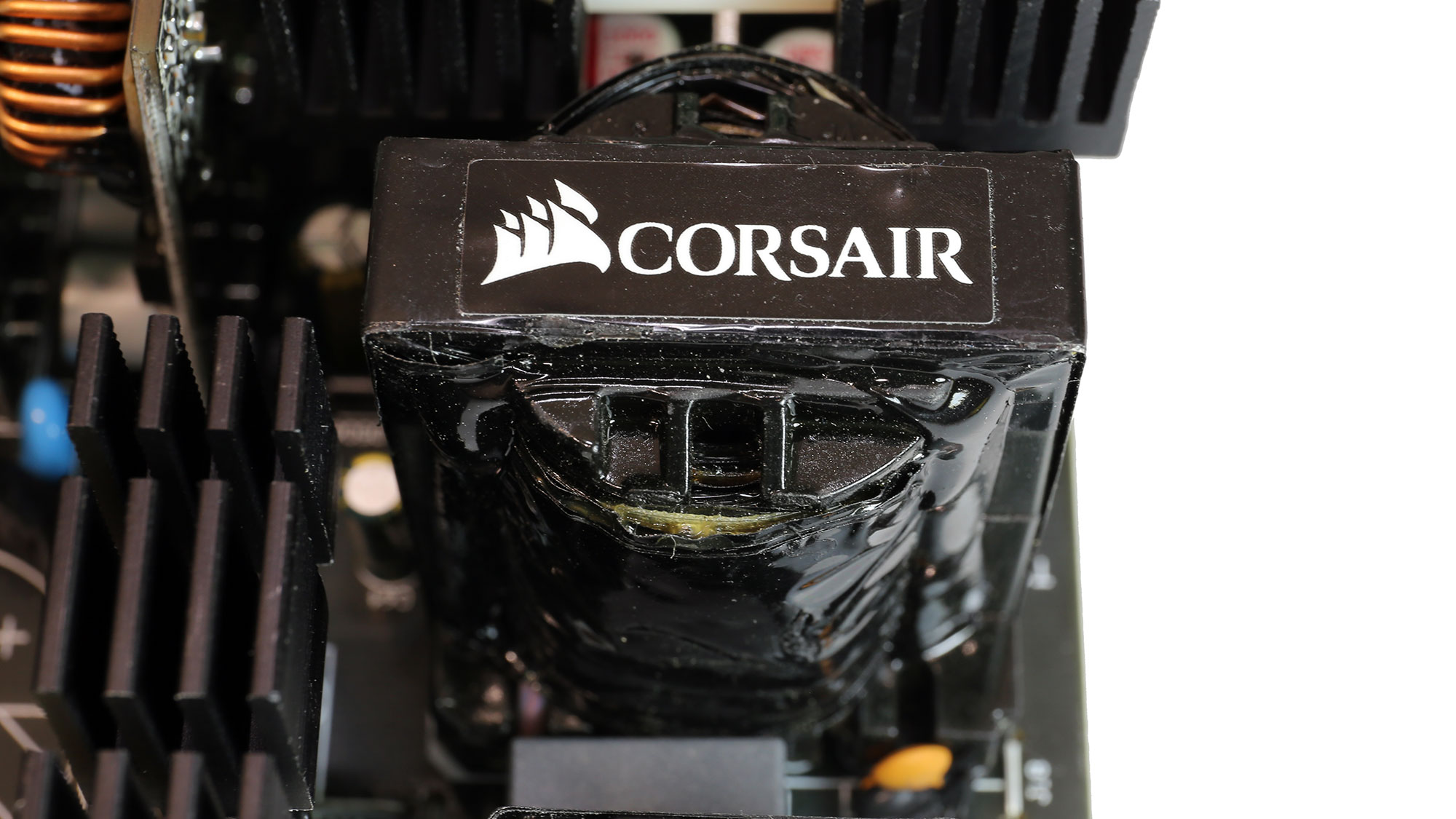
The main FETs are two Alpha & Omega, installed into a half-bridge topology. There is also an LLC resonant converter for lower energy losses. The resonant controller is an MPS HR1001C IC.
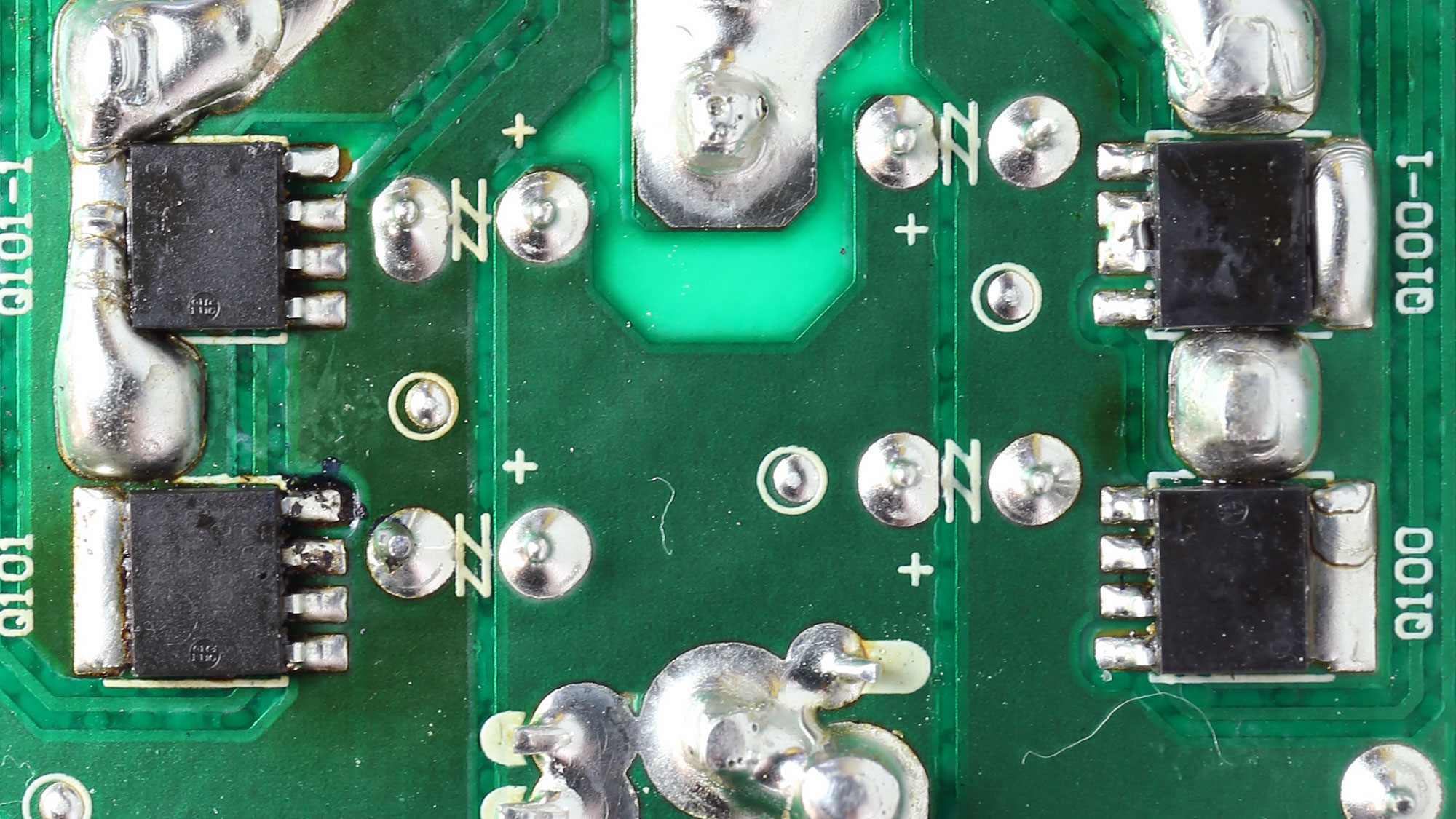
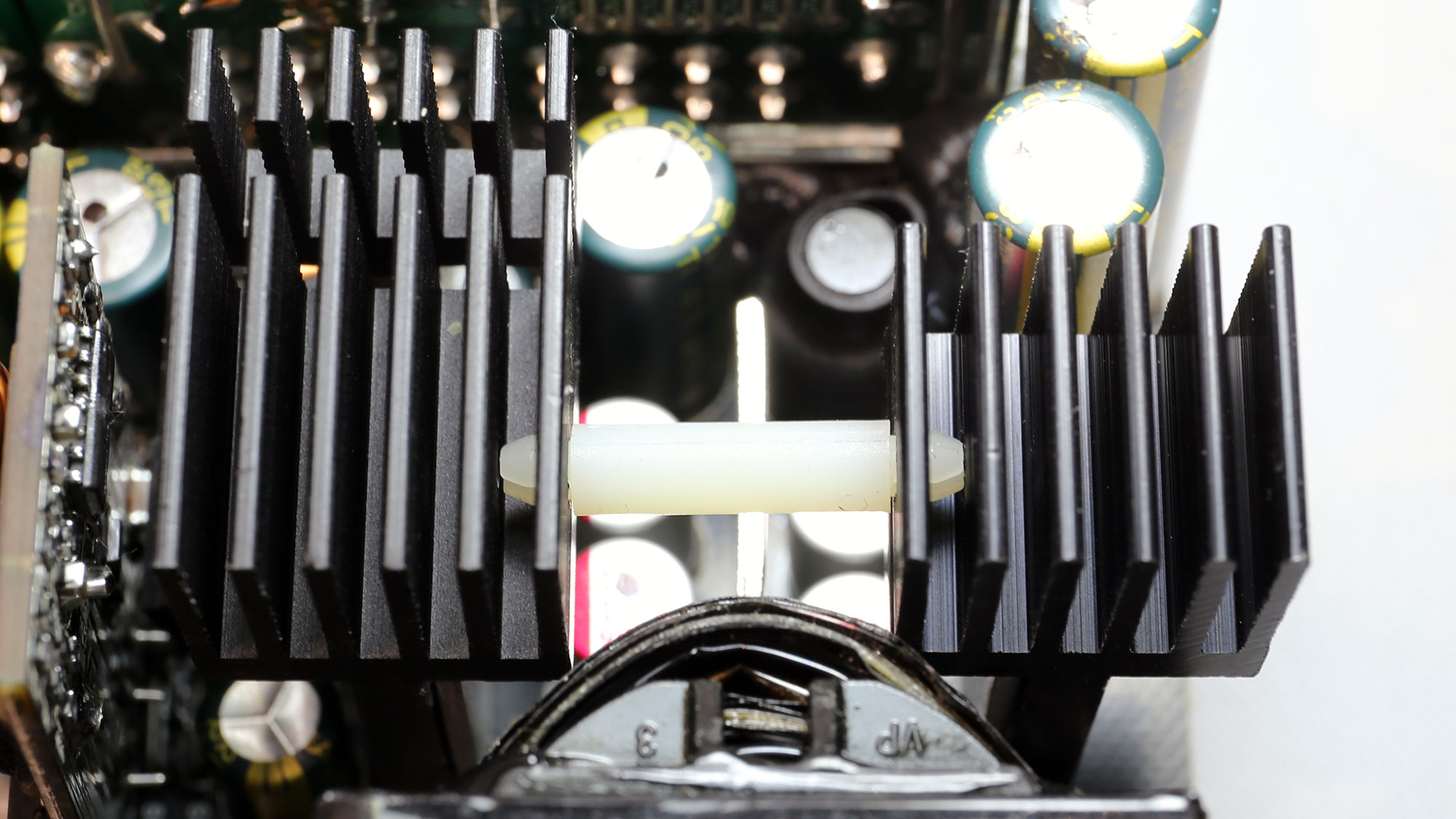
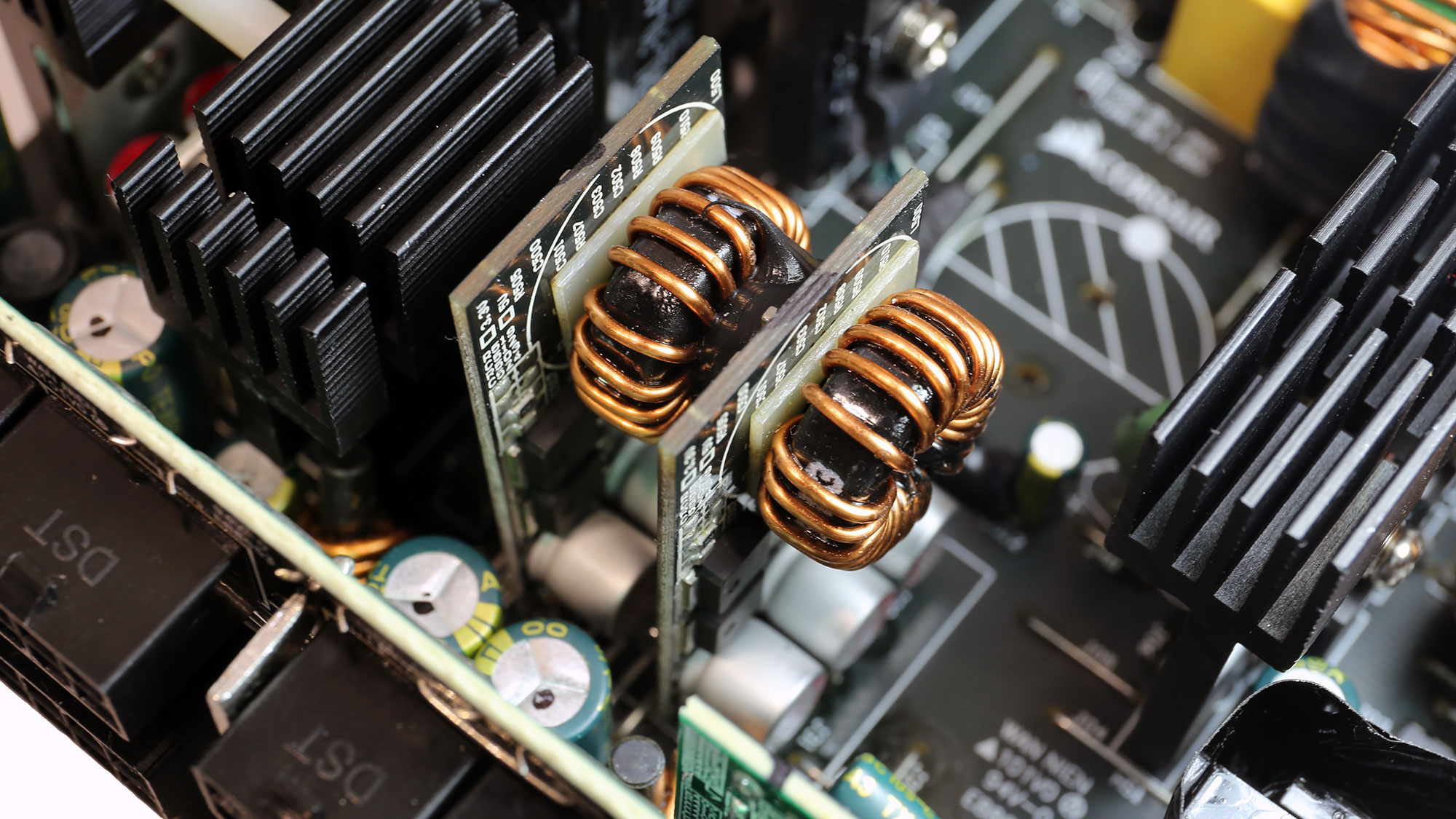
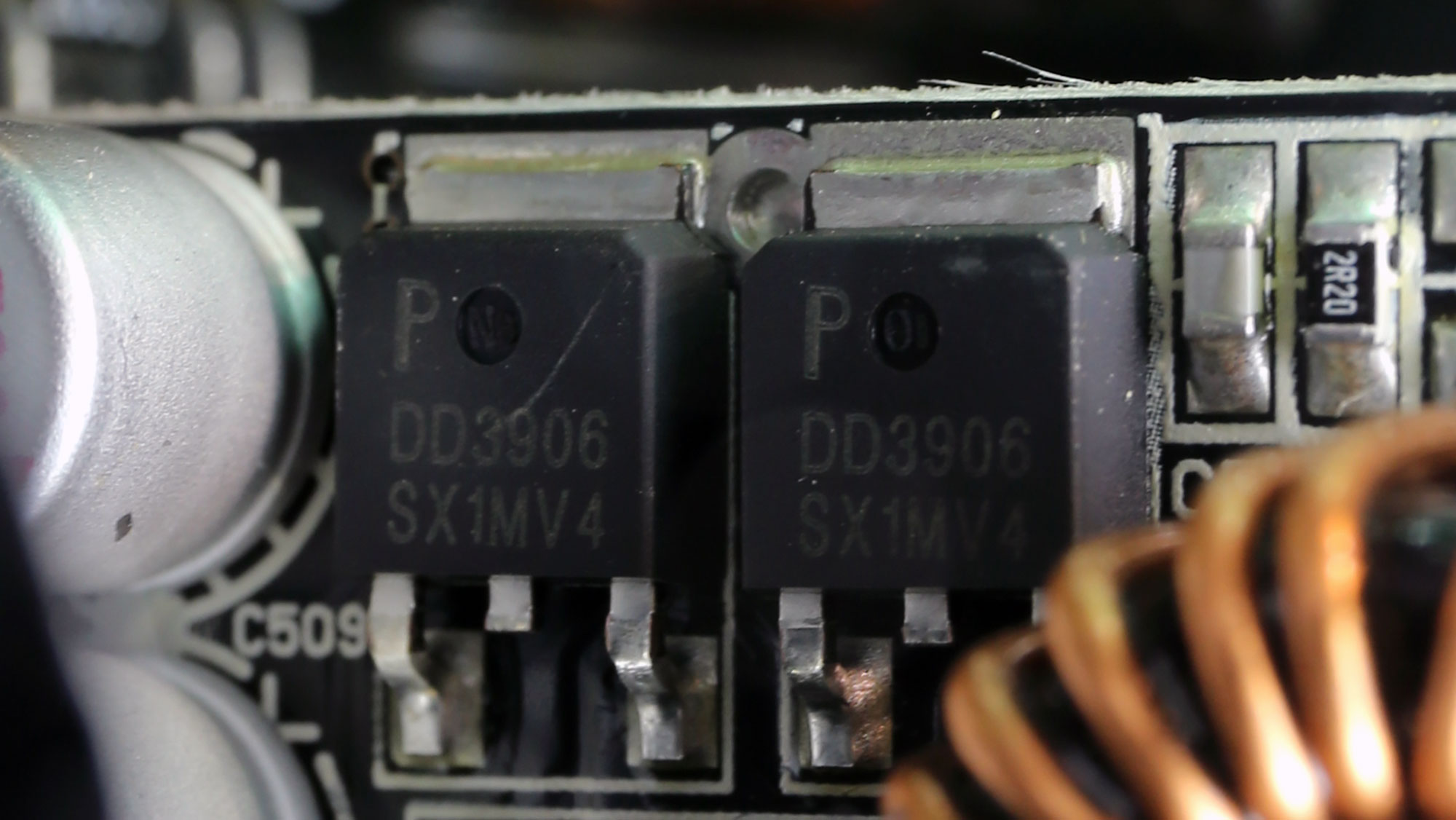
Four Nexperia FETs handle the 12V rail. Two DC-DC converters regulate the minor rails, though eight FETs, which an ANPEC APW7073 IC controls.
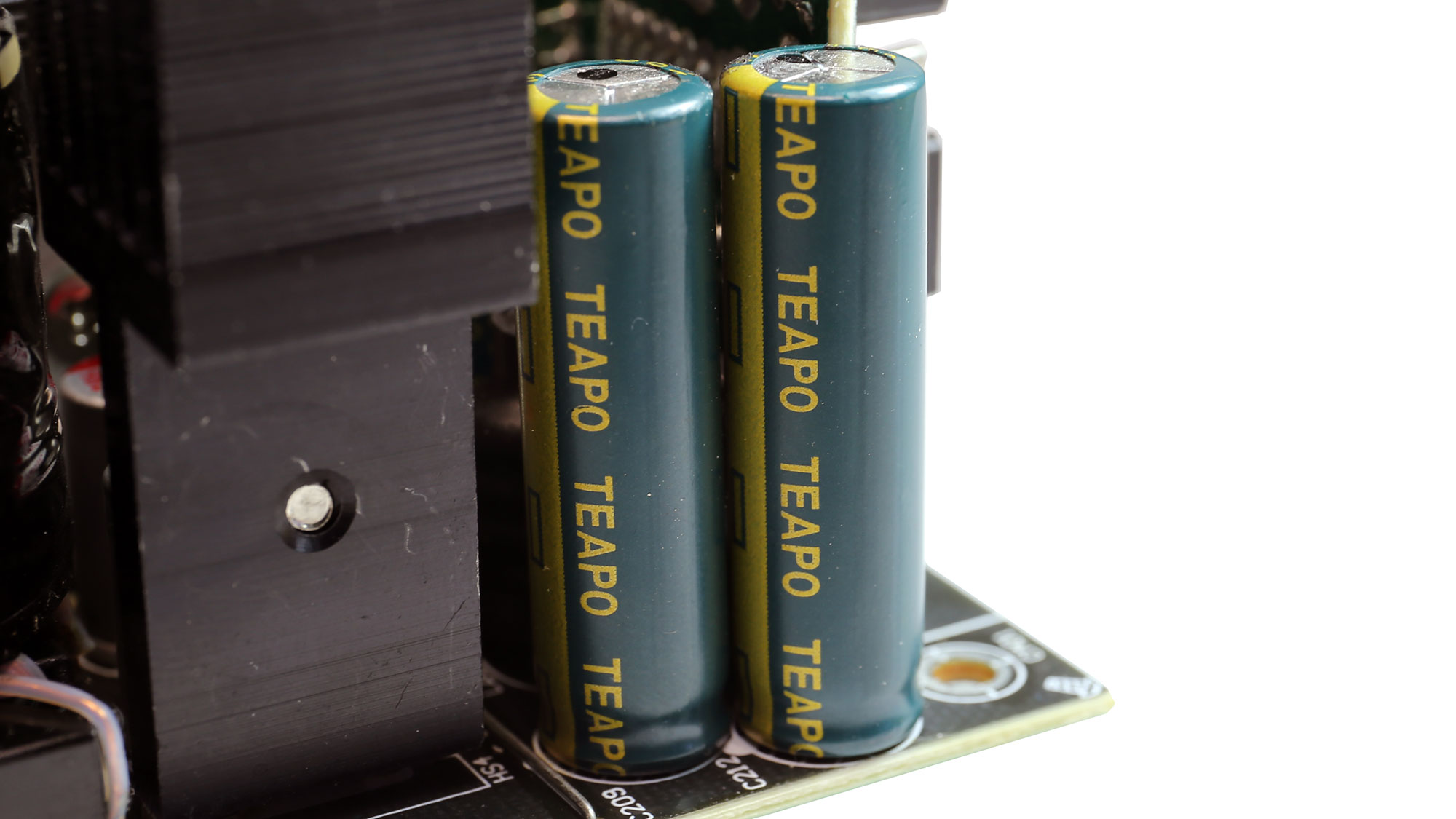
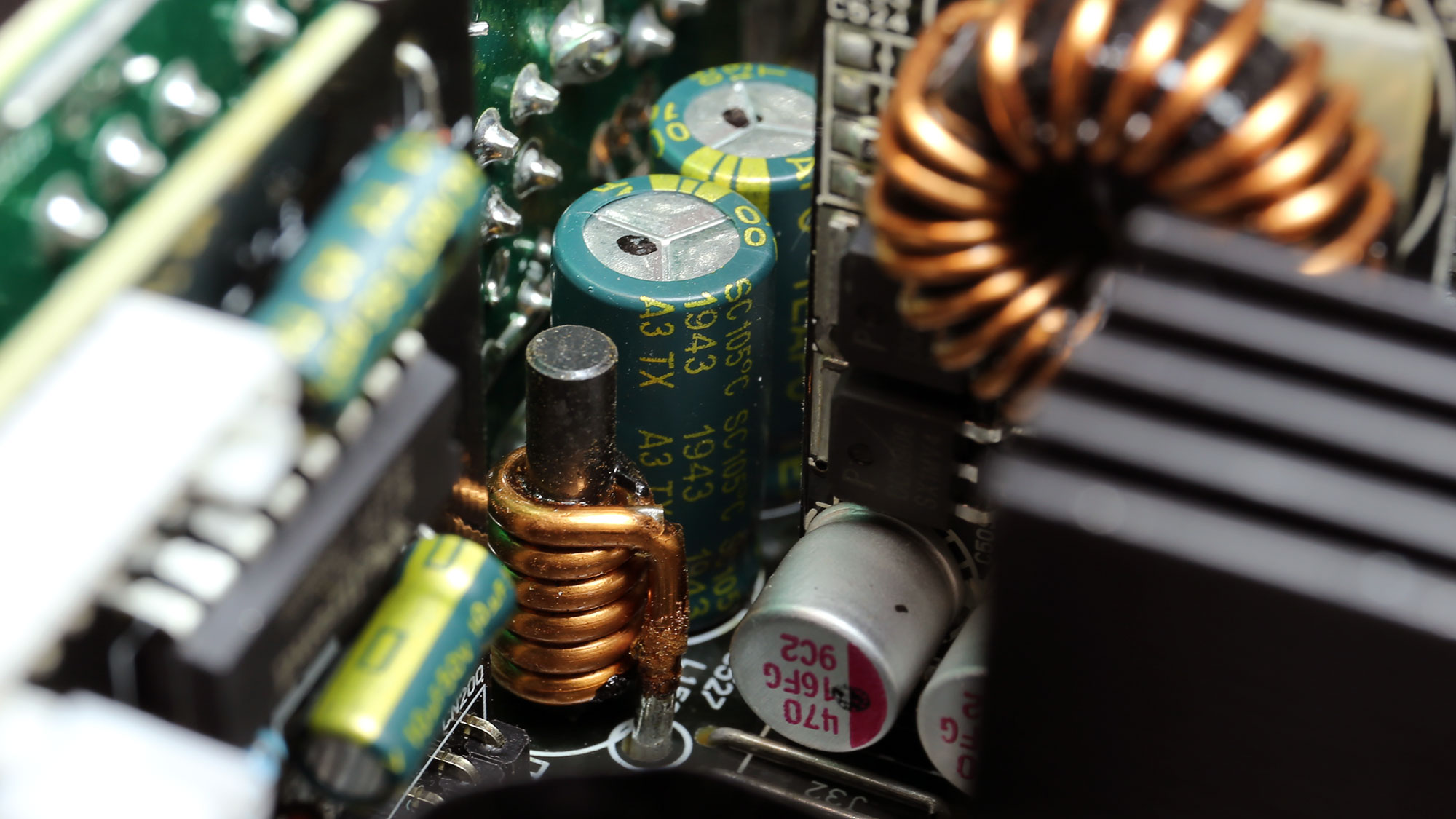

We don't want to see Teapo SC caps in PSUs with close to 100 dollars price tags.
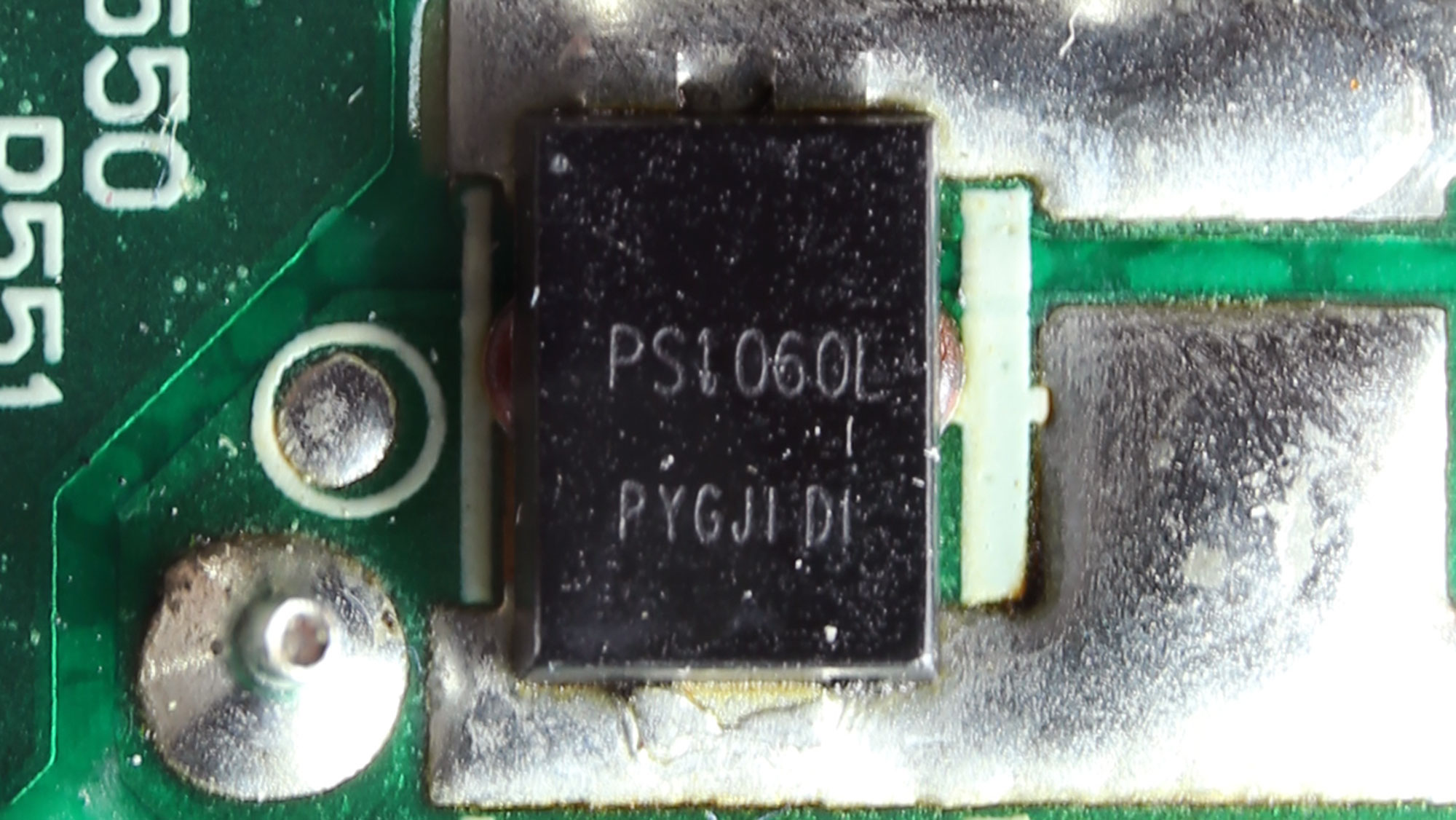

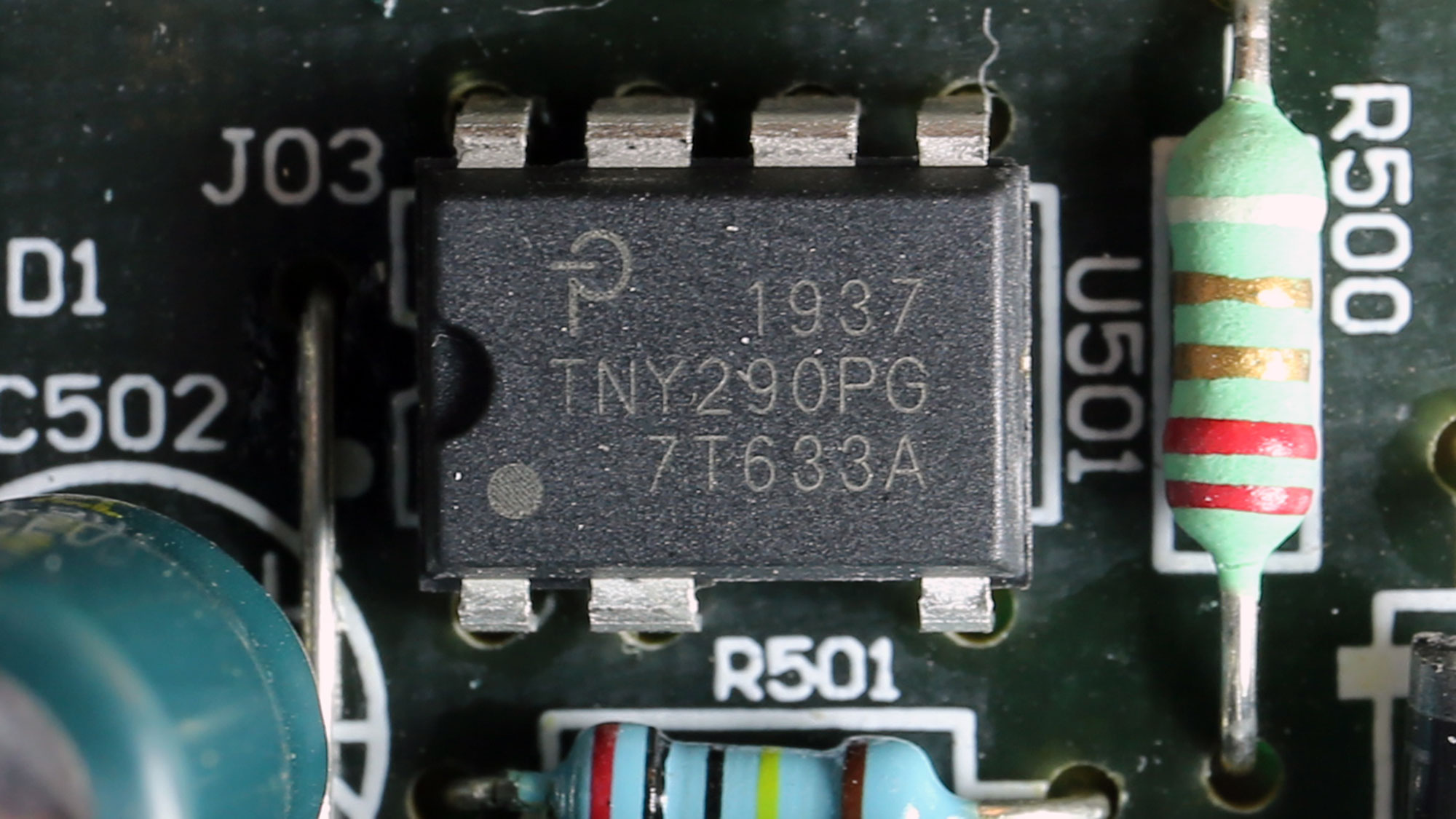
The 5VSB circuit uses an MCC PS1060L SBR rectifier on its secondary side. The standby PWM controller is a TNY290PG.

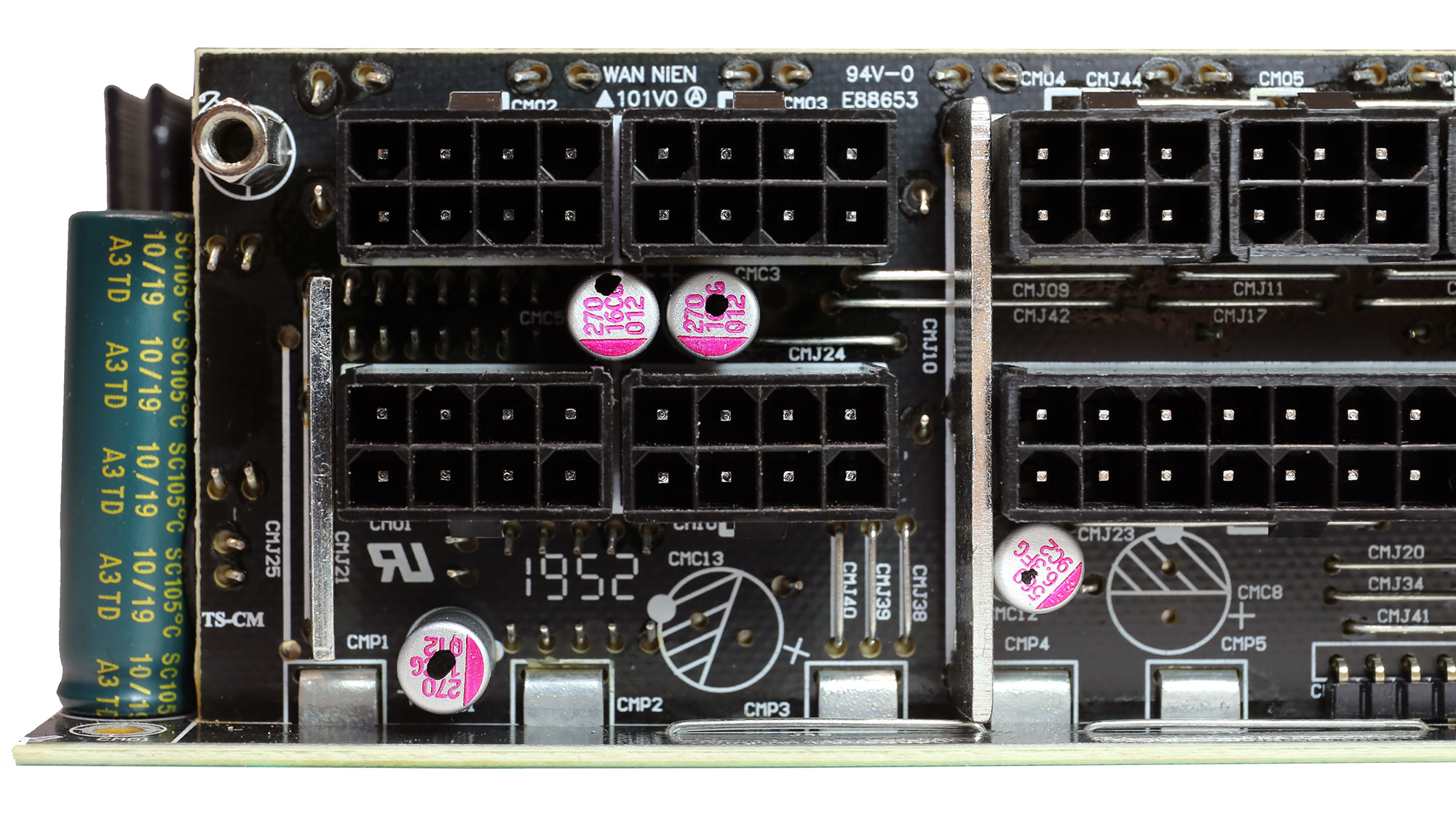
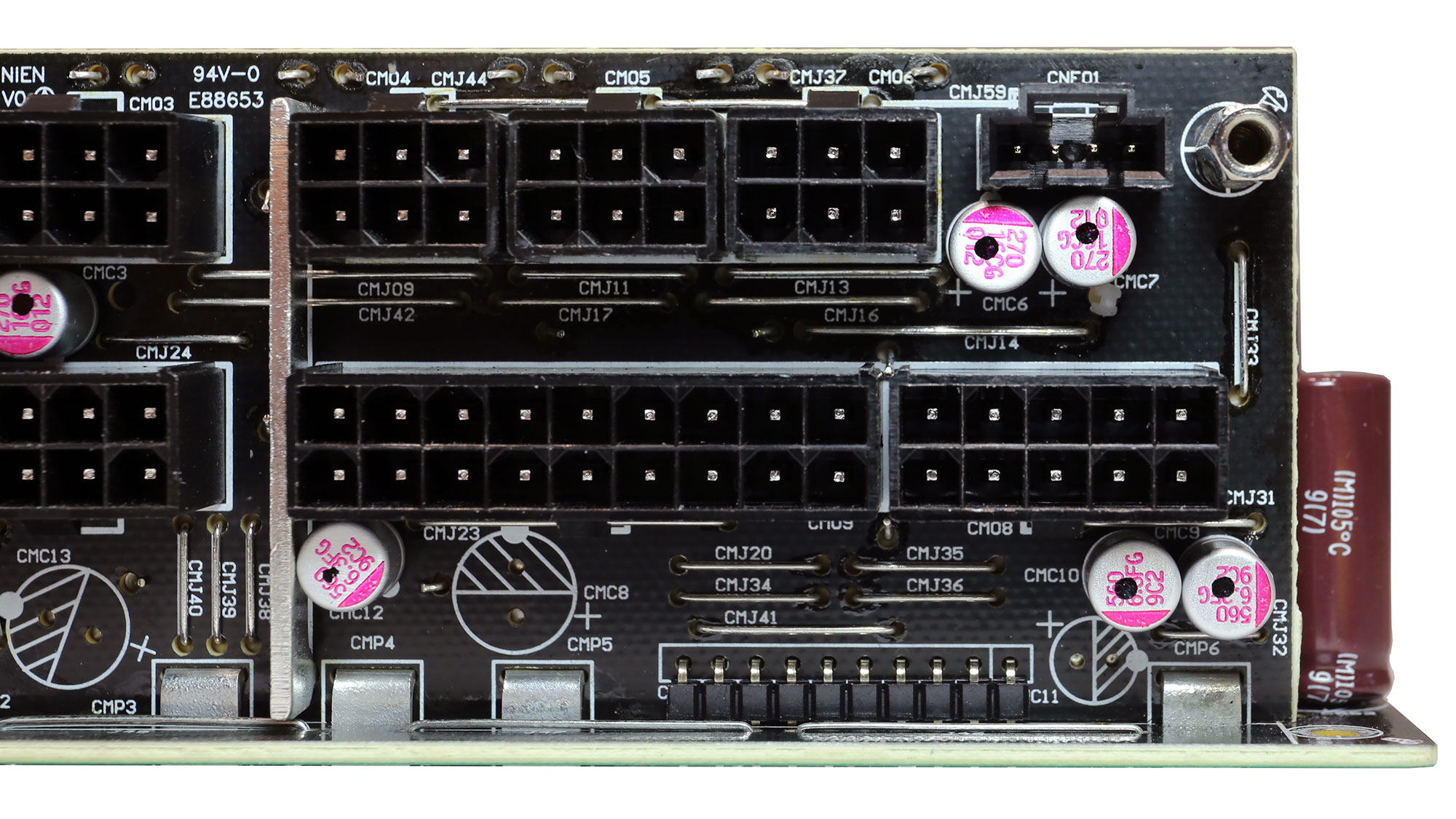
The modular board hosts several polymer caps for ripple filtering purposes.
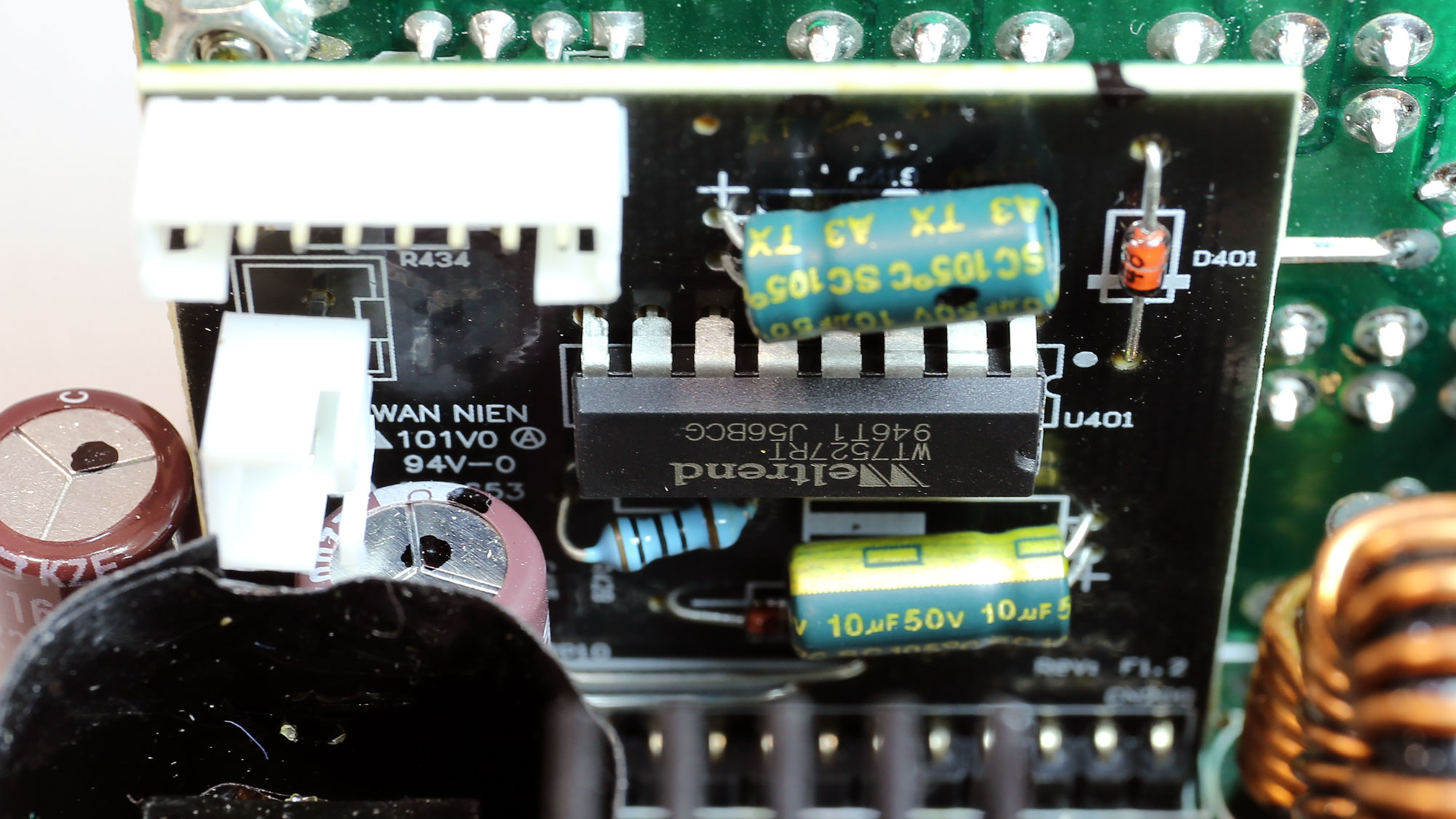
The main supervisor IC is a Weltrend WT7527.
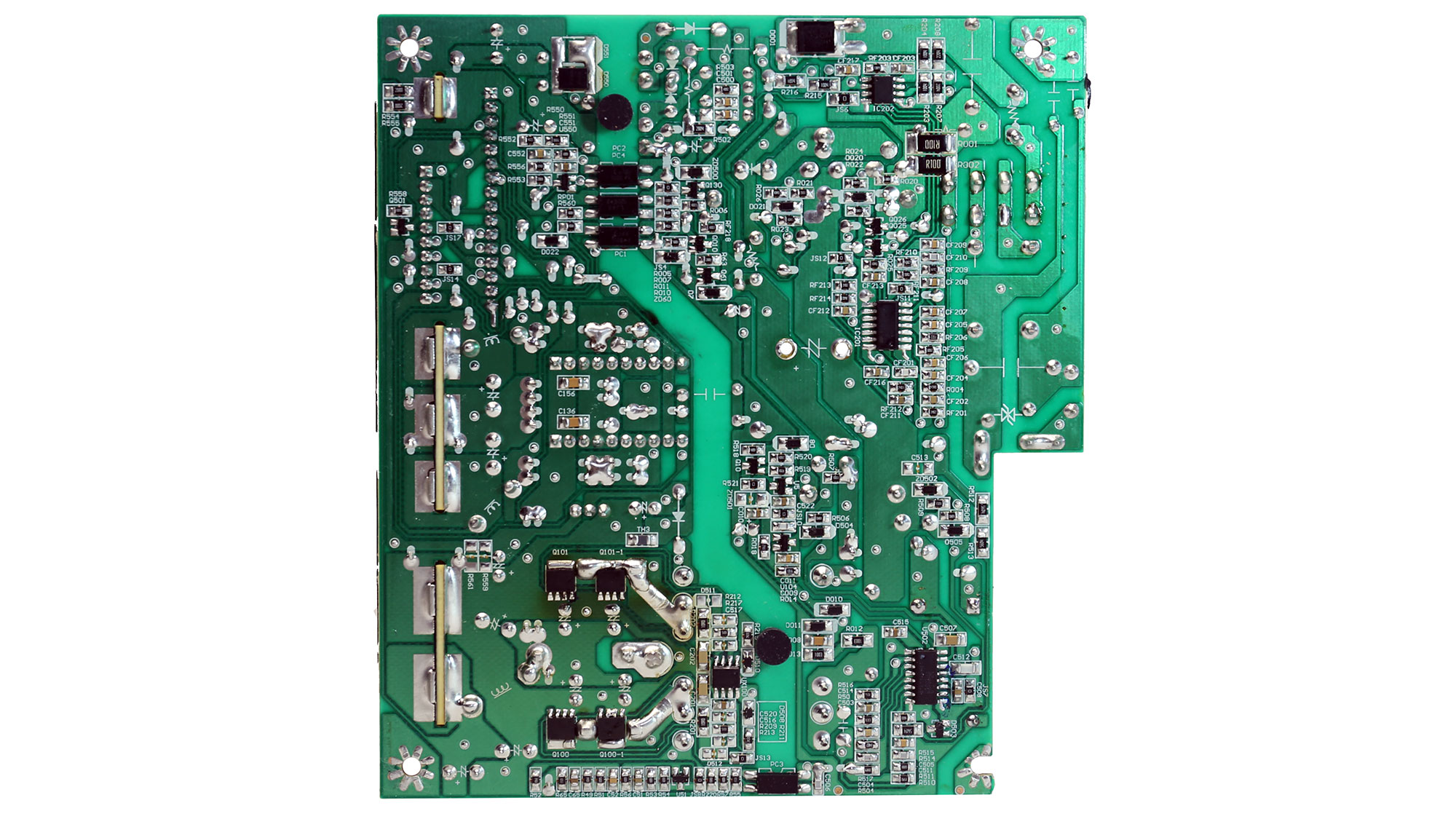

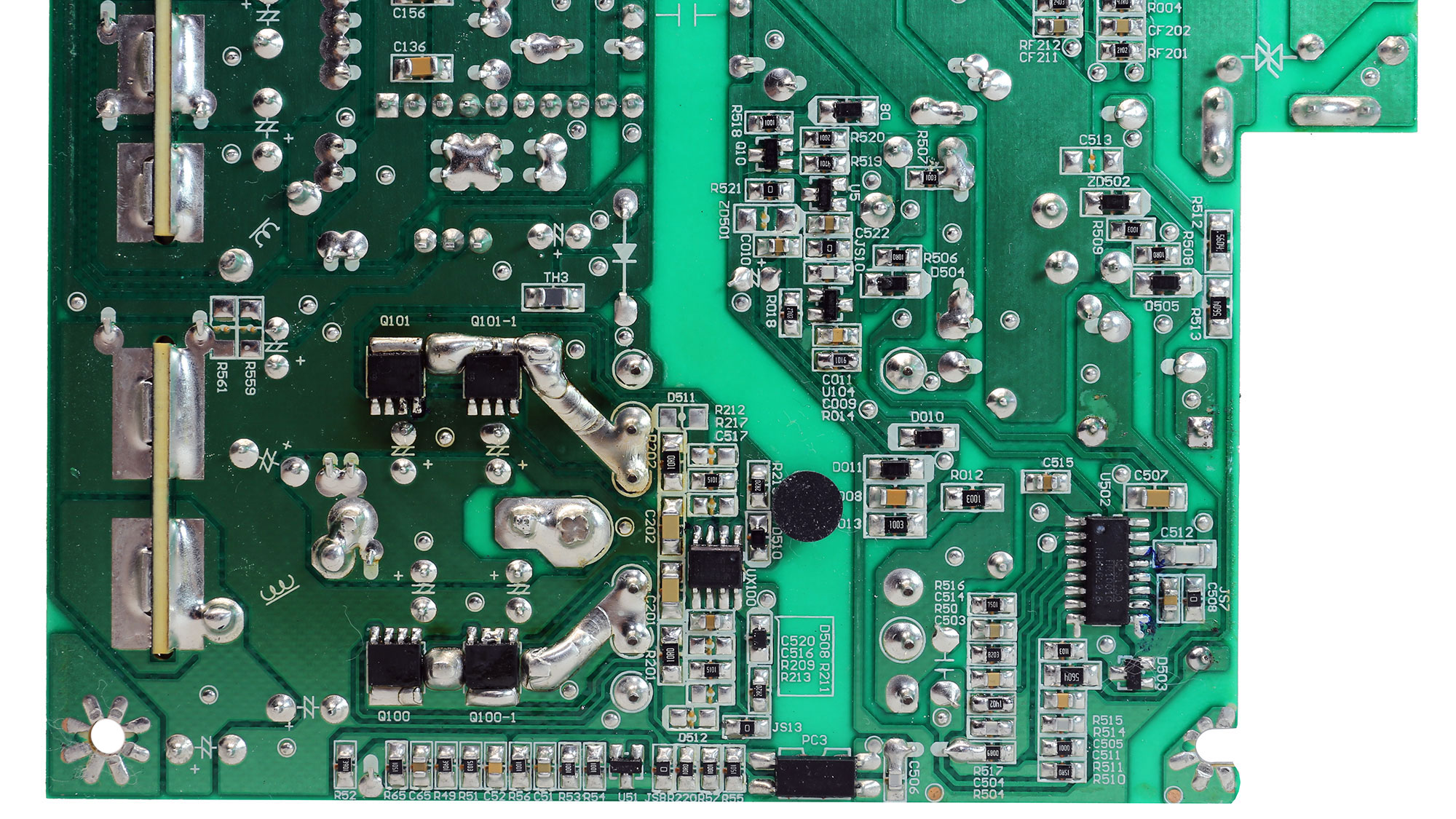
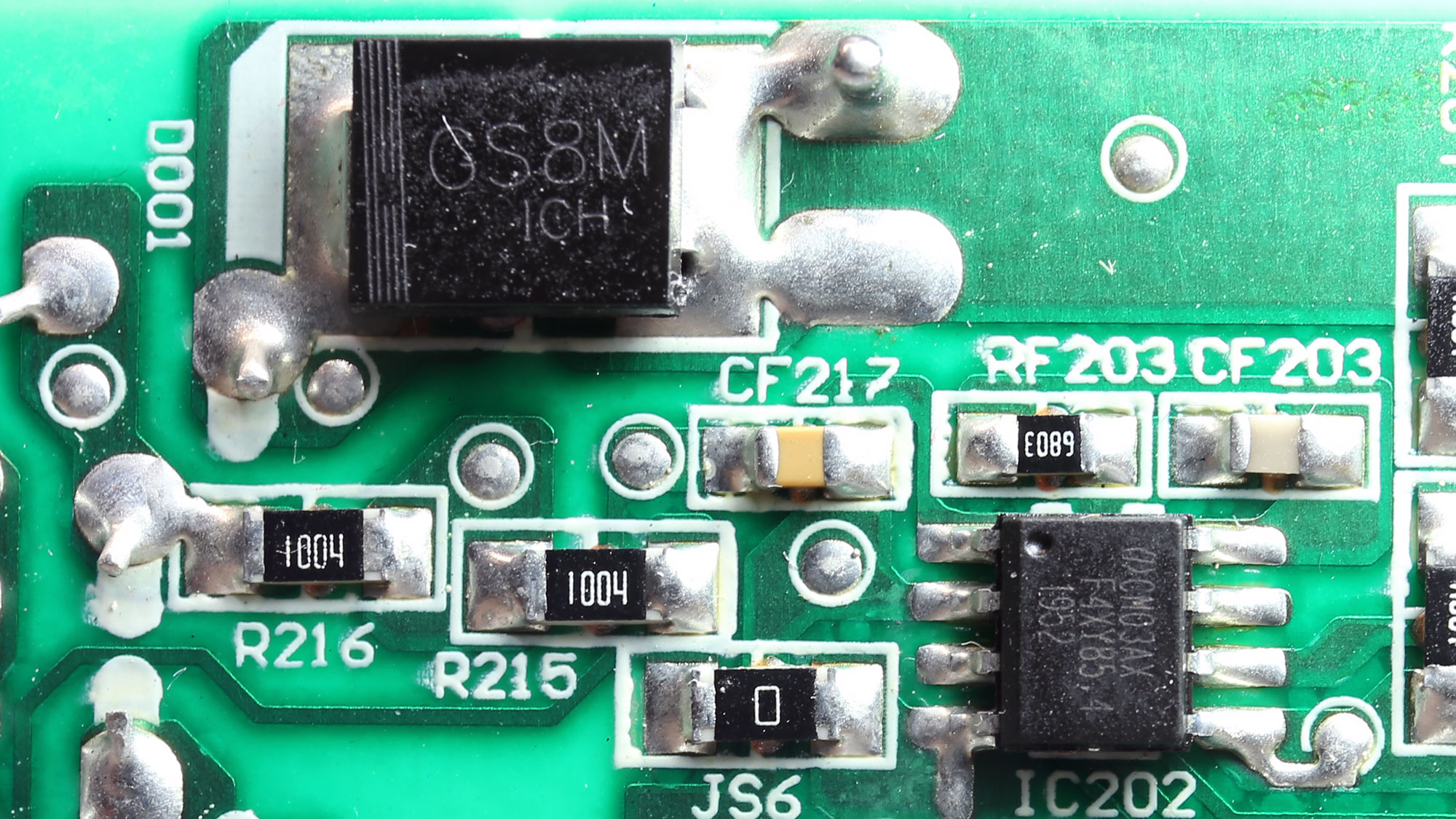
Soldering quality is good enough.
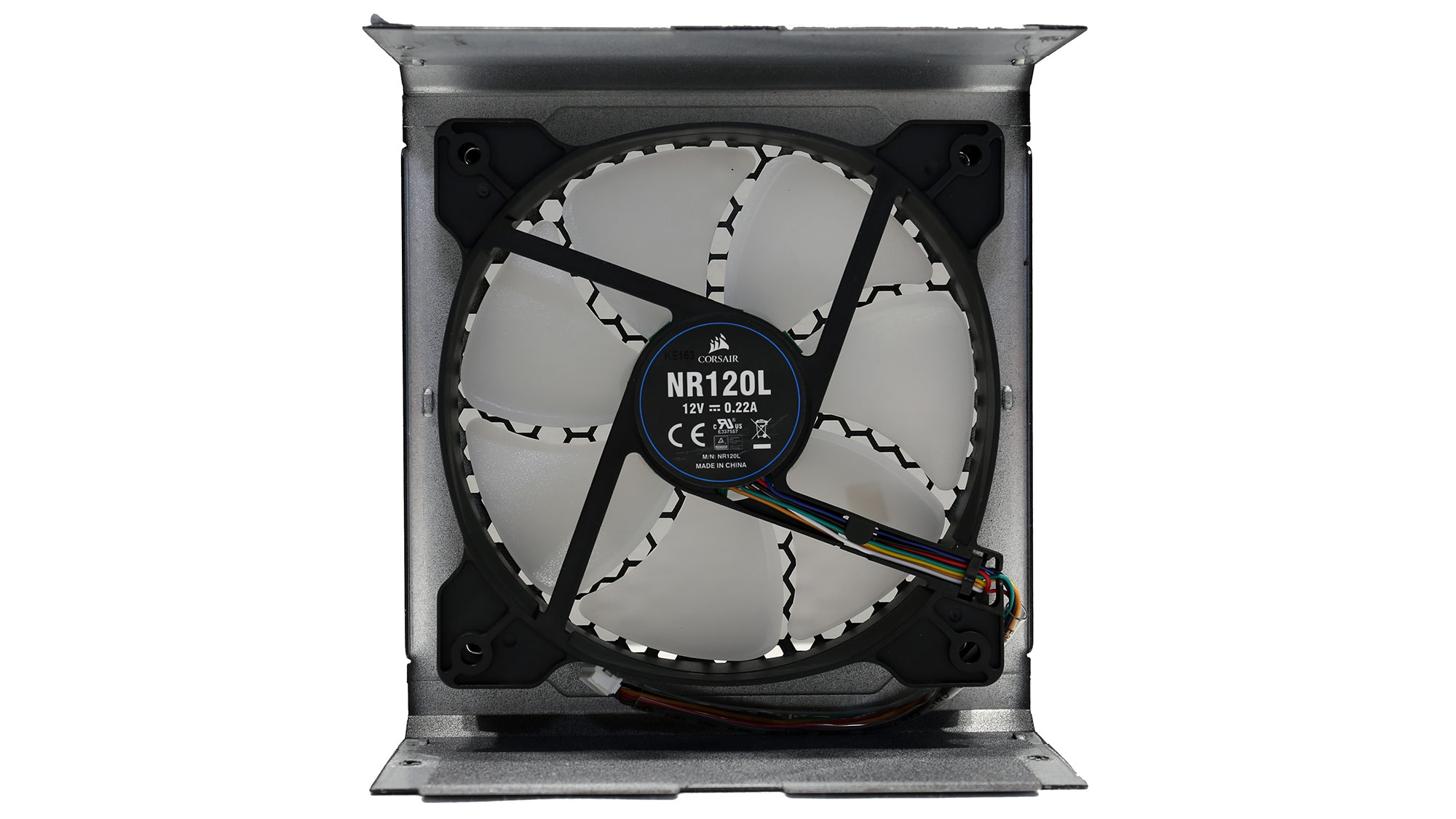
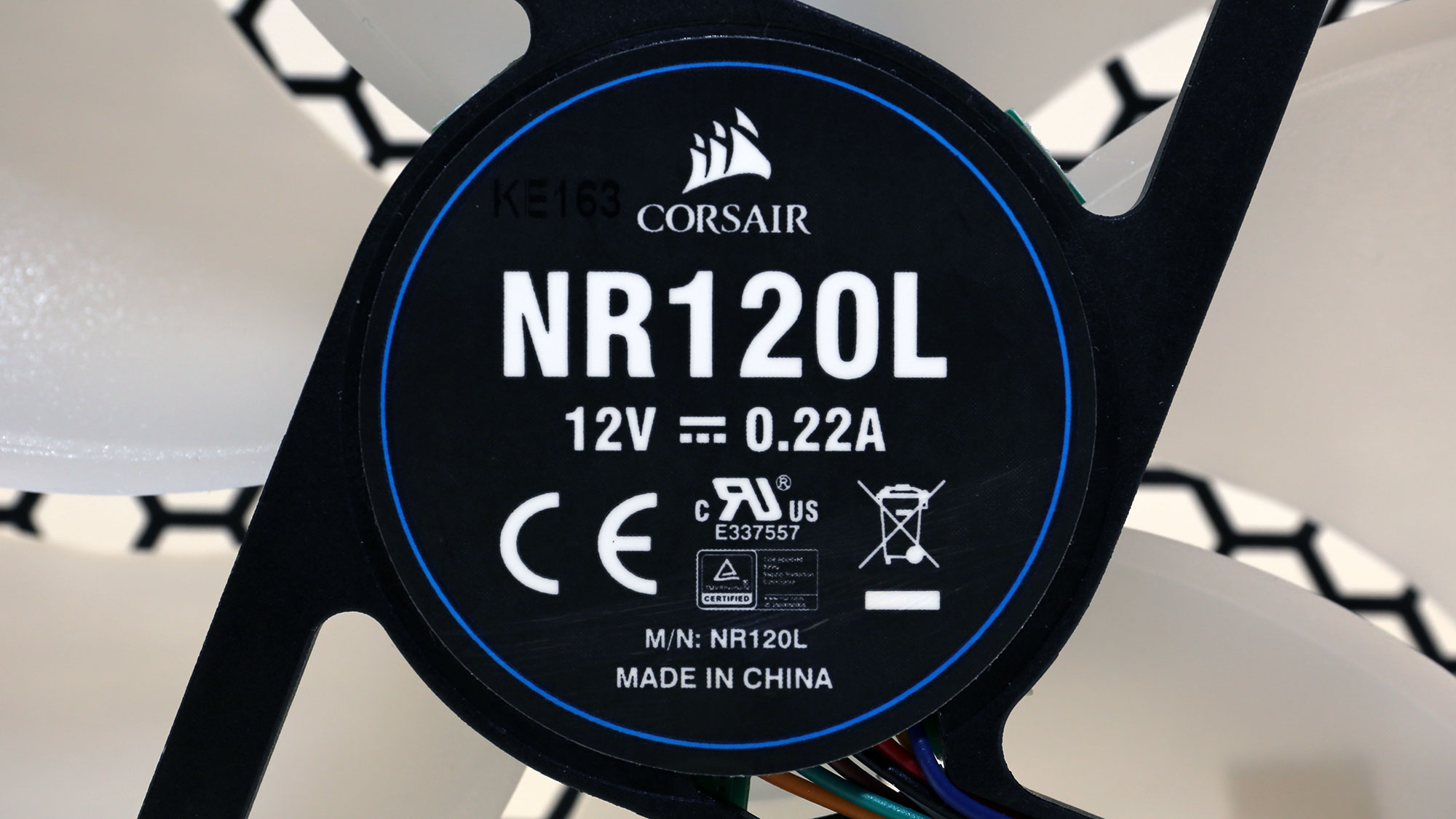
The cooling fan measures 120mm across and uses a rifle bearing.
MORE: Best Power Supplies
MORE: How We Test Power Supplies
MORE: All Power Supply Content
Current page: Specifications and Part Analysis
Next Page Load Regulation, Hold-Up Time, Inrush & Leakage Current, Efficiency and Noise
Aris Mpitziopoulos is a contributing editor at Tom's Hardware, covering PSUs.
